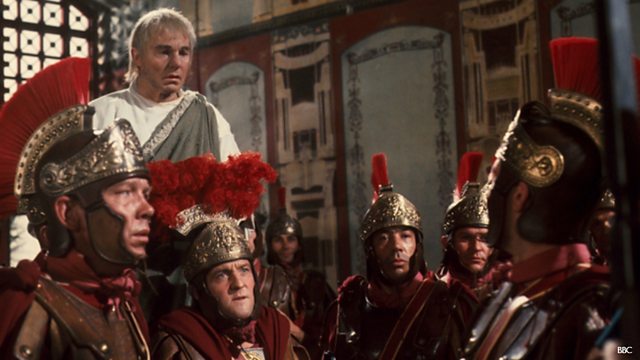
Salve, reader! Did you know that historical references in A Song of Ice and Fire and Game of Thrones are not restricted to the Middle Ages? In this article, we will travel through the history of Ancient Rome and its parallels in the universe created by George R. R. Martin. The highlight is the influence of the historical novel I, Claudius and its TV adaptation, of which George is a self-professed fan.
In July 2017, I posted an abridged version of this text to the asoiaf Subreddit and A Forum of Ice and Fire. The complete version is being published exclusively on Gelo & Fogo. Good reading!
♛ Clique aqui para versão em português.
George R. R. Martin’s interest in history is widely known among his readers. It is no secret that in his greatest work, A Song of Ice and Fire, the author attempted to bring fantasy closer to historical fiction. While creating his enormous fictional world and its multitude of characters, Martin naturally drew many elements from the real world, a fact that he does not deny.
Those who look for information about historical inspirations in Martin’s greatest work find, at first sight, structural resemblances with the Wars of the Roses and other characters and events from the histories of England and France. Real-world references in A Song of Ice and Fire, however, are not restricted to those times and places.
Perhaps it is not a well-known fact among readers, but Ancient Rome is also a historical period that interests Martin very much, and one that finds many similar events and elements in his novels. The author himself has referred to his taste for the period as a “morbid fascination”, of which not even his cats escaped: they were named after two of the most famous (or infamous) Roman emperors, Augustus and Caligula.
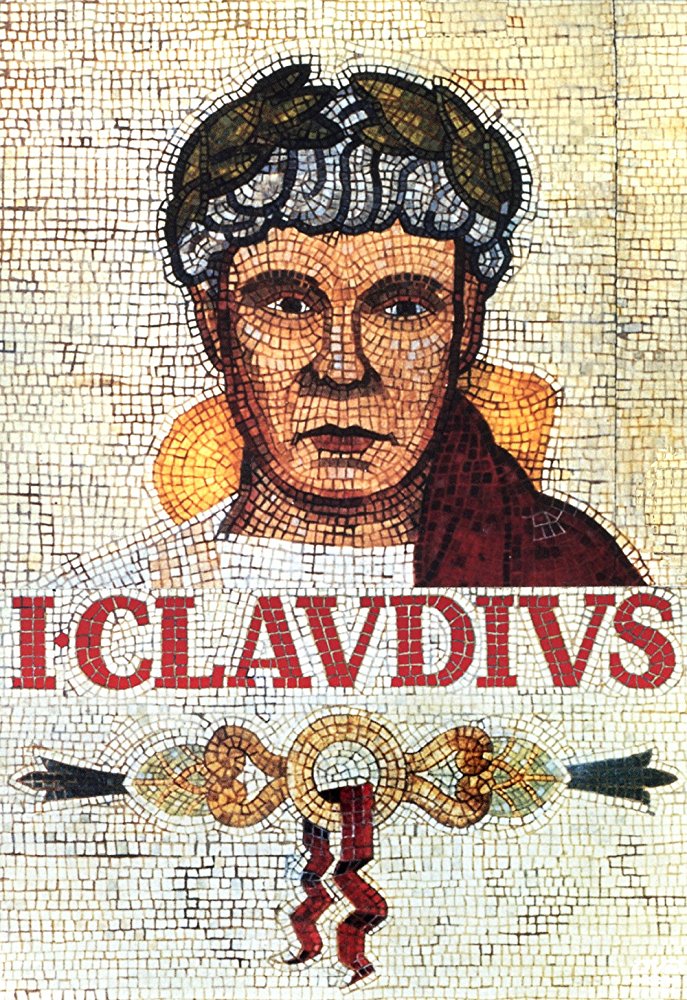
Within the genre of historical fiction set in Ancient Rome, I, Claudius, by Robert Graves, is a seminal work. Originally published in 1934, the novel is narrated as the autobiography of an outcast member of the Julio-Claudian family, the titular Claudius. The book follows Claudius through the court intrigue in the early Roman Empire, from his childhood until his ascension to emperor, and his time in the Empire’s highest office is chronicled in a sequel, Claudius the God (1935). The second book also follows the protagonist in his relationships with his wives Messalina and Agrippina, until his death and the rise of Nero.
Among the fans of I, Claudius is George R. R. Martin, who never made a secret of his admiration. The author has admitted having read Graves’s books and on several occasions praised their television adaptation, produced by the BBC. In light of Martin’s frequent statements of appreciation, it does not come as a surprise, therefore, that elements, devices, and events in A Song of Ice and Fire and its derived works appear to be inspired both by Graves’s novels and the BBC miniseries.
Excusing myself for “usurping” the title of a famous work by a classical author — Plutarch’s Parallel Lives — this article intends to present connections between Martin’s work and Graves’s novels, and Ancient Roman history as a whole. The Claudius novels themselves are largely based in works by ancient historians of the real world, such as Suetonius, Tacitus, and Cassius Dio.
In spite of the title, it is not my intention to suggest one-for-one correspondences between characters and situations. Martin is an author of fiction, after all, and one of his greatest virtues is precisely working creatively with historical references. The central idea here is to search for real-world elements that may have served as inspiration for the author. Hopefully, readers interested in the world of Westeros may become more interested in real-world history after reading these parallels — something that happened to me when I first discovered and started to look into the historical references in A Song of Ice and Fire.
Before the analysis proper, a spoiler warning of sorts: the text contains information that can be considered as revealing of the plot in the Claudius novels and their TV adaptation — even though they are mostly stories documented nearly two thousand years ago. Without further ado, the parallels.

It would be odd if the first reference presented in this text were not one acknowledged by George R. R. Martin himself. The connection between Tiberius and Stannis Baratheon is one of the most evident between characters of I, Claudius and A Song of Ice and Fire. In a 2011 interview, Martin stated that his character has elements of some historical rulers, and mentioned the Roman emperor among them:
And it is important that the individual books refer to the civil wars, but the series title reminds us constantly that the real issue lies in the North beyond the Wall. Stannis becomes one of the few characters fully to understand that, which is why in spite of everything he is a righteous man, and not just a version of Henry VII, Tiberius or Louis XI.
(Kaveney, Roz. “A Storm Coming: An interview with George R R Martin”. Amazon.co.uk, 2000.)
In the following years, on his blog and in an interview, Martin went further and conceded that his Stannis has much not only of the historical Tiberius, but specifically of actor George Baker’s portrayal of the character in the I, Claudius miniseries. The author does not go into details about which are the similar points, but some of them are fairly easily noticeable. Naturally, it is not a case of a carbon copy: Stannis draws aspects from other historical characters, and, of course, has original elements created by Martin.
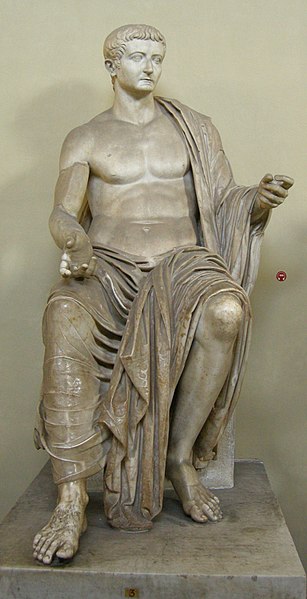
One of the most noticeable traits in both characters is strikingly coincidental: Pliny the Elder, a Roman historian from the 1st century, described the Roman emperor as “tristissimus hominum” (“the gloomiest of men”), and Stannis’s grim, unsmiling and stern personality is clearly inspired by that of Tiberius.
Tiberius succeeded his step- and adoptive father Augustus as the second emperor of Rome. He went into history, however, as a somber, reclusive ruler, who showed signs of never having wanted to actually achieve the Empire’s highest rank. This description matches Martin’s Stannis, who sees his claim to the Iron Throne as a duty, and not as personal desire or ambition.
In private life, the cold and distant relationship between Stannis and Selyse Florent may have also been inspired by the one that Tiberius had with his second wife Julia the Elder. In this case, not everything is analogous, however. Stannis never had a first wife from whom he was forcibly separated, such as happened to Tiberius and Vipsania Agrippina, nor there are rumours of Selyse being sexually promiscuous, as there were about Julia.
Stannis’s periods of withdrawal on Dragonstone may have been influenced by the occasions when Tiberius left Rome to exile himself on islands. During Augustus’s rule, when he was the second most powerful man in Rome, Tiberius withdrew to Rhodes, in Greece, where he lived for some years, and afterwards, when he was already emperor, he moved to Capri instead of living in the capital. During A Game of Thrones, Stannis had recently withdrawn to his castle on the island of Dragonstone, fearing for his life after the death of Jon Arryn. Later on, he isolates himself on the island again after his defeat at the Battle of the Blackwater.
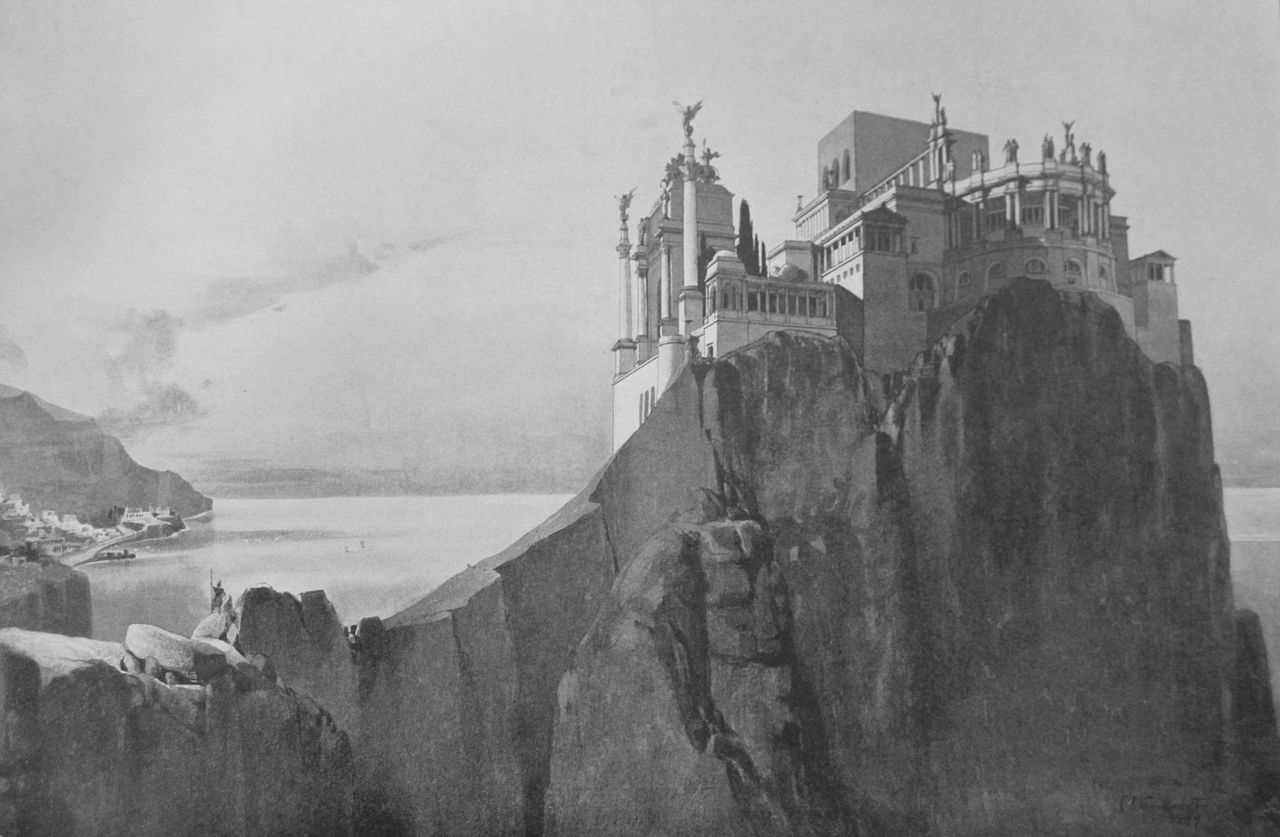
Furthermore, both Stannis and Tiberius have close advisors who help them and in whom they trust, but with whom they have troubled relationships. Even though the male and female roles are in some ways interchanged, the characters of Thrasyllus, Livia, Melisandre, and Davos Seaworth have remarkable resemblances in personalities, personal events, and in their relationships with the rulers they serve.
During his voluntary exile on Rhodes, Tiberius met the Greek philologist and astrologist Thrasyllus, who, at a certain point, “predicted” that he would be summoned to Rome again and named Augustus’s heir. It really came to happen, and Tiberius became interested in astrology. Historical accounts of Tiberius say that he held Thrasyllus in the highest honour and considered the astrologist a true friend, granting Roman citizenship to him and his family upon his ascension to Emperor. In the I, Claudius TV series, a simultaneously trusting and suspicious relationship between the (future) Emperor and his “magical advisor” is presented as comic relief.
Stannis has his main supporters in Davos and Melisandre, and both seem to resemble Thrasyllus in some way. Davos is a loyal servant that, although lowborn, is the one Stannis trusts the most and to whom he grants many titles (knighthood, lands, a lordship, and the office of Hand of the King), much like Tiberius did to his friend. The Baratheon king is also convinced by Melisandre that he has a magical prophesied role to play in the destiny of the world. Initially a sceptic, Stannis is convinced of this fact and of the existence of magic itself by visions that the priestess sees in the flames and that truly come to happen, much alike Thrasyllus’s predictions. Also, such as in the sometimes troubled relationship between Thrasyllus and Tiberius, Stannis’s terms with his advisors are not always peaceful. He imprisons Davos at a certain point, for example, and also rebuffs some of Melisandre’s advice and refuses her help in the Blackwater and in his campaign through the North.
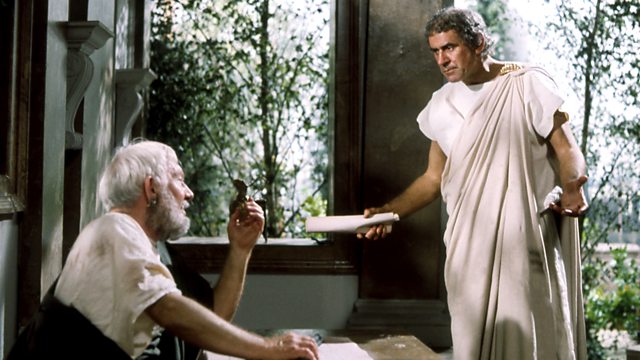
In I, Claudius, Livia is the keenest supporter for Tiberius to succeed Augustus, his stepfather. In the TV series, Tiberius is presented as uninterested in the matter, showing himself in many moments as untrusting of his mother and irritated with her insistence about it. The removal of other pretenders to the Iron Throne supposedly done by Melisandre through magical means may also be raised as a parallel (albeit an inexact one) with Livia’s machinations to pave the way for her son to succeed her husband.
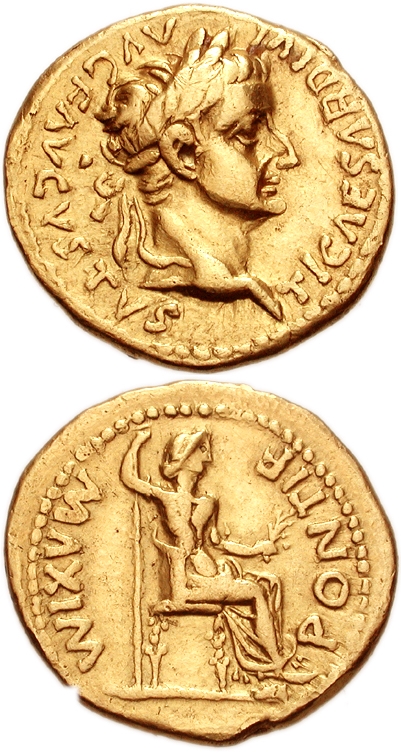
In several moments, Tiberius demonstrates ignorance about the murders and ruses perpetrated by his mother, much like Stannis initially ignores the exact nature of the shadow that murders his brother Renly. It is also a doubtful matter for the reader if Melisandre actually caused the deaths of Joffrey Baratheon, Balon Greyjoy, and Robb Stark, or if she merely predicted them and pretended they were consequence of her blood magic. In the real world, there are doubts if Livia was truly responsible for the deaths of several of Augustus’s designated heirs, who were ahead of Tiberius in the line of succession (as some historians and Graves’s historical fiction suggest).
In the military sphere, both Tiberius and Stannis made a name for themselves as accomplished military commanders. Tiberius conquered territories in Northern Italy that were crucial to the establishment of the frontiers of the Empire in that region. Stannis resisted the Siege of Storm’s End in Robert’s Rebellion, defeated the Iron Fleet during the Greyjoy Rebellion — which helped to cement the Baratheon dynasty — and was victorious in the Battle of Castle Black. In Graves’s novel, Claudius considers his uncle as one of the greatest generals in Roman history, while in Martin’s work, Tywin Lannister states that Stannis is a bigger threat to his interests than all other claimants together.
Neither the Roman nor the Westerosi commanders, however, are duly recognized by the monarchs they succeeded (or should succeed). Moments when Stannis complains to his closest advisors about being slighted and disregarded by Robert, his older brother and former King of the Seven Kingdoms, are not uncommon in A Song of Ice and Fire. Likewise, I, Claudius’s Tiberius frequently grumbles, both to his brother Drusus and to his mother Livia, about the bureaucratic tasks to which he is appointed by Augustus, going as far as to say that his stepfather thinks of him as a mere bellboy.
The relationship between brothers Drusus and Tiberius is also in a sense paralleled in Stannis and Robert, despite some noticeable differences. Drusus was younger than Tiberius, and the two of them had a close and friendly relationship, elements that are not true about the Baratheons. Stannis always sees himself as in the shadow of his elder brother and disregarded by Robert, who does not care much for his younger brother either. The similarity between the fraternal pairs resides in their popularity and in how they deal with their military subordinates.
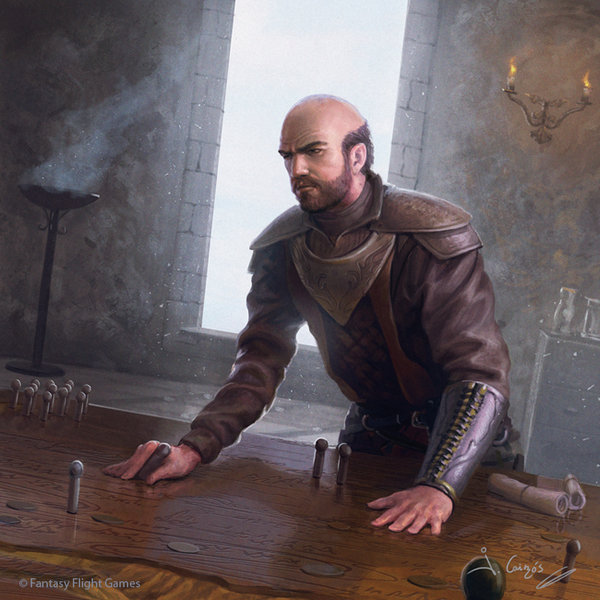
All of the four men are described as effective military leaders, but their demeanor differ. Drusus is described by his son Claudius as beloved by his legions for giving the men more liberties than usual and encouraging camaraderie among them, and Robert is portrayed in A Song of Ice and Fire as enjoying a similar sympathy from the men he commands. On the other hand, Stannis and Tiberius are described as capable generals who are also followed by their men, but through rigidity and discipline (as befits their general character). This matter of popularity is in turn extended to the common folk: while Drusus and Robert are beloved by the people, the same does not apply to their brothers.
It is possible that even traits that appear opposite at first glance may hide associations between the characters. In I, Claudius, Tiberius is portrayed as very promiscuous, quite eccentric, and abusive in his sex life. Stannis, conversely, is described in Martin’s novels as virtually asexual: he does not have any sexual interest in his wife, he forbids prostitution on Dragonstone, and once suggested that King’s Landing’s brothels should be closed. His extramarital relations with Melisandre would have a strictly “magical” purpose.
It should be noted, however, that Graves’s portrayal of a perverted Tiberius is largely derived from Suetonius, a Roman historian from the 1st and 2nd centuries whose biographies were based on second-hand accounts, which resulted in quite sensationalized versions of many historical events and characters, especially concerning the Julio-Claudian emperors. Suetonius’s controversial accounts of Tiberius are indirectly revealing of the negative view the Roman senatorial class had of the emperor, and this is where another possible inspiration for Martin may reside: Stannis’s unpopularity among much of the Westerosi nobility is also a notorious fact in A Song of Ice and Fire.
Elements of Tiberius in Stannis are not strictly restricted to characteristics of the character himself, it would seem. In Graves’s novel, a recurrent theme related to the emperor is an alleged resemblance between him and legendary Greek general Agamemnon. Increasingly paranoid, Tiberius begins to believe that people are talking about him when they quote passages of Homer’s Iliad that mention Agamemnon in a negative light — and from a certain point on, that is indeed true. Suetonius tells in his work of a poet who slandered Agamemnon in a tragedy and was immediately put to death by Tiberius, for example.
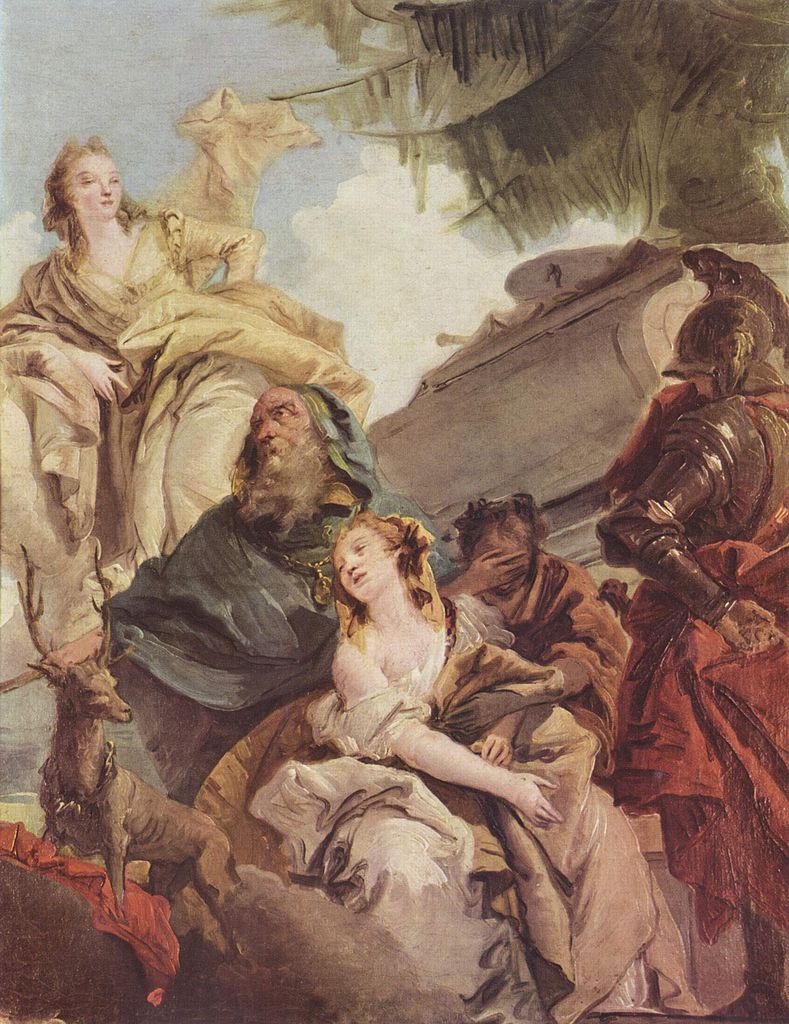
The curious fact here is that, in mythology, Agamemnon sacrificed his daughter Iphigenia to placate the goddess Artemis, which allowed the Greeks (who he led) to sail to Troy and fight in the famous war. A similar situation is impending in A Song of Ice and Fire, with Stannis likely ordering the sacrifice of his daughter Shireen. Although there is no certainty about the circumstances in which this will happen in Martin’s books, the event itself was spoiled by Game of Thrones’s showrunners, and is foreshadowed in passages of the published volumes. Even more interestingly, an animal associated with Artemis is the stag, and in some versions of Iphigenia’s myth the goddess is angered when one of these sacred animals is accidentally killed. The coincidence in this case, naturally, is that the stag is the symbol of House Baratheon.
Last but not least, Stannis “inherited” a famous quote attributed by historians to Caligula, which is also present in Graves’s novels and its TV adaptation. During gladiatorial games in the arena, Caligula furiously exclaims to the crowd: “I wish you had only a single neck, I’d hack it through!” — suggesting it would be easier to eliminate all of them this way. In a chapter from The Winds of Winter, Stannis says to Theon Greyjoy: “You are not the only turncloak here, it would seem. Would that all the lords in the Seven Kingdoms had but a single neck…”. Although Stannis does not have much in common with Caligula in other aspects and the circumstances of their words are different, it is another undeniable nod by Martin to an infamous quote in Roman history.

George R. R. Martin has stated that if Robert Baratheon has a model in a monarch, it would be Edward IV of England, and that his character also has characteristics of Henry VIII. Furthermore, Adam Whitehead points out that another character played by Brian Blessed lends many elements to Robert, the fictitious Richard IV from historical sitcom Blackadder (of which George is also a fan). However, if Martin strongly flavored his Stannis with George Baker’s Tiberius, Robert may have received bits of Brian Blessed’s portrayal of Augustus in I, Claudius and of the historical Roman emperor.
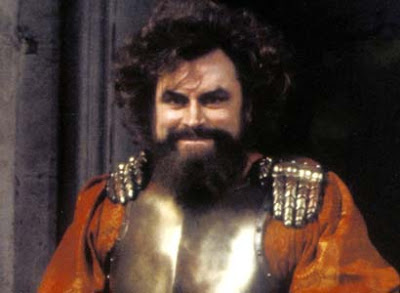
Some of Robert’s traits that resemble Graves’s and Blessed’s fictional Augustus are the eventual overweight, the easy-going nature combined with moments of fury (reckless and unjust, in many moments), the readiness for making friends even out of old enemies, and the ignorance of the multitude schemes and plots around them.
Robert died without ever knowing that Joffrey, Myrcella, and Tommen were not his children, and that his wife Cersei Lannister was unfaithful to him with her brother Jaime for all of their marriage. There are no accounts about Livia having extramarital affairs, but for decades Augustus was also oblivious to her machinations behind his back, many of them against his interests and himself. In the end, both women murdered their husbands, directly or indirectly, to ensure their children would rise to power (or so some historians and Graves say, in Livia’s case).
It would appear that the historical Augustus served as inspiration for Martin in another of his fictional monarchs as well. While it is known that Aegon I Targaryen, the first King of the Seven King Kingdoms, was largely drawn from William I of England (not coincidentally called “The Conqueror”), he also finds some parallels in the first Roman emperor.
Renato Reis points out that similar personalities are found in Aegon and Augustus, as well as in people close to them. While the Roman emperor had in Marcus Vipsanius Agrippa, a man of the lower nobility, his greatest general and friend, the Westerosi king had Orys Baratheon, a bastard, as the first Hand of the King. The influence of Visenya, sister-wife to Aegon, in his reign, also resembles that of Livia over Augustus’s rule.
The parallels between Livia and Visenya are not restricted to their influence in the affairs of state of their consorts, however. In The World of Ice and Fire, the circumstances of the death of Aenys I (Aegon’s son by Rhaenys, and his successor) are called into question by Maester Yandel, the author of the fictional work. After falling ill, Aenys was put under the care of his aunt Visenya, who could not prevent his death. One hour after his passing, she traveled to Pentos to bring her exiled son Maegor back to Westeros, who was then crowned king. Since Visenya did not previously show any sympathy for Aenys, rumors arose that she could be directly involved in his death, to favor her own son’s ascension to the Throne.
Aenys was, at first, a young man quite well-liked by the people, a trait he shares with Marcus Claudius Marcellus, Augustus’s nephew, son-in-law, and designated heir, but it is in the circumstances of their deaths that these two characters are more alike. It is told that a rivalry existed between Marcellus and Agrippa for Augustus’s attention and succession, and in Graves’s novel, Livia kills Marcellus to allow for the return of Agrippa from his time in Asia (as she considered him more useful to prevent the return of Rome to a republic). Under the pretext of caring for the ill Marcellus, Livia murders him by poisoning, an event originally suggested by historian Cassius Dio. Afterwards, Agrippa would also be murdered by Livia to clear the way for her son Tiberius.
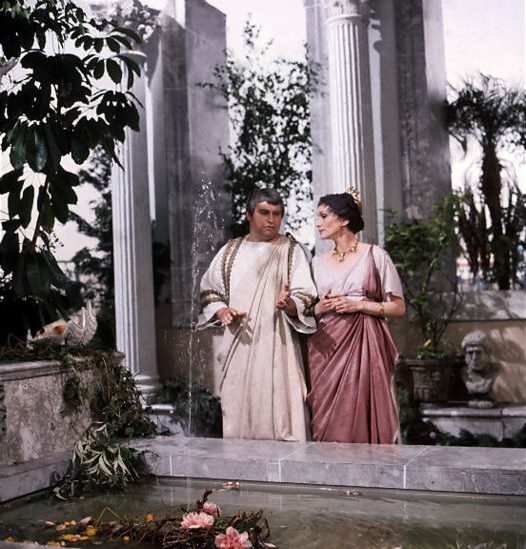
At last, a side comment of sorts, to highlight a quote about Augustus and Livia that finds remarkably similar ones in Martin’s novels (although not regarding Robert, Aegon, or their consorts). In the first pages of the fictional autobiography, Claudius describes the influence of his grandmother over her husband, saying that “Augustus ruled the world, but Livia ruled Augustus”.
Both Juliette Harrison and Extinct-dragon indicate a passage in A Storm of Swords that is very similar to that quote. Tyrion Lannister contemplates the relationship of his parents, specifically the time when Tywin was Hand of the King, thinking that “many people said that Lord Tywin Lannister ruled the Seven Kingdoms, but Lady Joanna ruled Lord Tywin“. The same figure was used by Martin in The Sons of the Dragon, when Gyldayn, the fictional historian, says (about Maegor) that “his Grace might rule the Seven Kingdoms, men whispered, but he himself was ruled by the three queens […]“.
The idea that “behind every man stands a greater woman” (who would actually be the one in charge) is not exactly an unseen figure in literature, and this may not be a direct reference from Martin to Graves. Since George has already stated that he was influenced by Graves’s work and that other references exist, however, it would be inconsequential to ignore passages that certainly look like a paraphrase (and we will tackle more of these later on).

Not only in thoughts about their forebears are Tyrion Lannister and Claudius similar, however. The character that often works as Martin’s mouthpiece in A Song of Ice and Fire is in many ways alike the one that gives I, Claudius its title and narrates it as his autobiography. When one has come to know both works, it is hard not to think of one character when reading about the other.
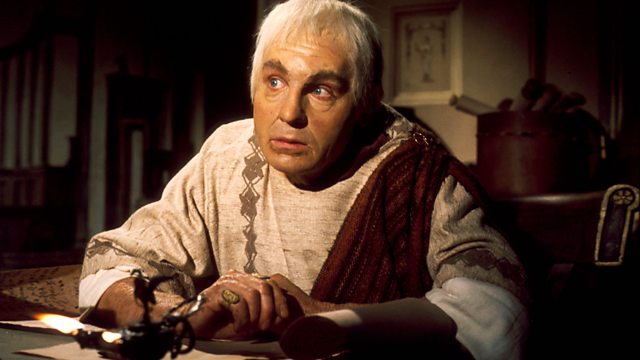
In an interview with Adrià Guxens, Martin revealed how he had the idea of an “embryo” of Tyrion while he wrote Windhaven with Lisa Tuttle, in 1981. The author did not make any references to Claudius, but the “dressing” for that character’s life, when he was years later reused in A Song of Ice and Fire, may have had inspirations in the life story of the Roman emperor.
Ab initio, both characters have physical conditions that very much influence their lives: Tyrion, apart from dwarfism, has arched legs, a jutting forehead, and mismatched eyes, being nicknamed “Imp” for his appearance; Claudius had a limp, weak knees, a slight deafness due to an illness at a young age, and was prone to head shakes. Claudius lost his father Drusus when he was one year old, and when his physical conditions became evident, his family ostracized him, especially his mother Antonia, who considered him a monster. Analogously, Tyrion’s mother died giving birth to him, and his father Tywin despised him. The Lannister patriarch blamed his son for the death of his wife and because of his deformity, which in his view brought dishonor to House Lannister.
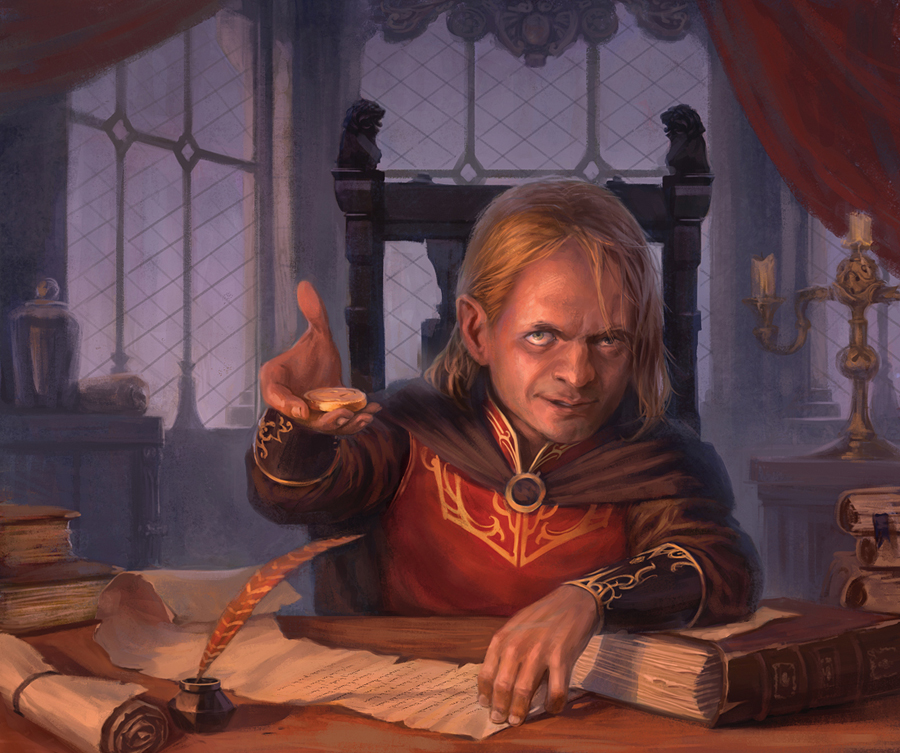
The psychological consequences of their physical conditions also stand out as similarities: loneliness, the interest for books and history, the sharp mind. Eventual ascensions to high offices — Claudius as emperor, Tyrion as acting Hand of the King — saw both characters with a pragmatic and diligent conduct, not shying away from getting their hands dirty when they deemed it necessary to accomplish their goals or when they were challenged. The books also show both of them as fairly successful military commanders, employing unorthodox and ingenious tactics on the battlefield.
Their personalities, however, are not completely alike. Historian Cassius Dio tells that Claudius was very prone to drinking and sex, which is a remarkable similarity, but Tyrion is portrayed as much more ambitious and cunning than the historical Claudius (and than Graves’s version of him, at least initially). In this aspect, there is a much more remarkable parallel between the dwarf and Richard III of England, especially the version presented by Shakespeare in his play, for which Martin has also shown appreciation.
Family relationships are also similar between Tyrion and Claudius. Both are largely rejected by their rich and powerful families, except for their prodigious brothers, who are their best (and one of the few) friends: Germanicus and Jaime. in addition, Livilla, Claudius’s older sister who in Graves’s historical fiction frequently harasses him, seems to find an extreme counterpart in Cersei.
In romantic life, many connections as well. At the age of thirteen, Claudius found in Livia Medullina Camilla someone who treated him well in spite of his disabilities, something no other girl did, and fell for her. His luck increased when Augustus and Medullina’s grandfather expressed a mutual interest in having them married. On the day of the betrothal, however, the girl died by poisoning (by Livia, according to Graves). At the same age, Tyrion met and lived a love story with Tysha, a lowborn girl, whom he married. The relationship had a brutal ending, however, when Tywin found out about the marriage, forcing Jaime to tell his brother that Tysha was a prostitute and organizing a gang rape, with Tyrion as a participant.
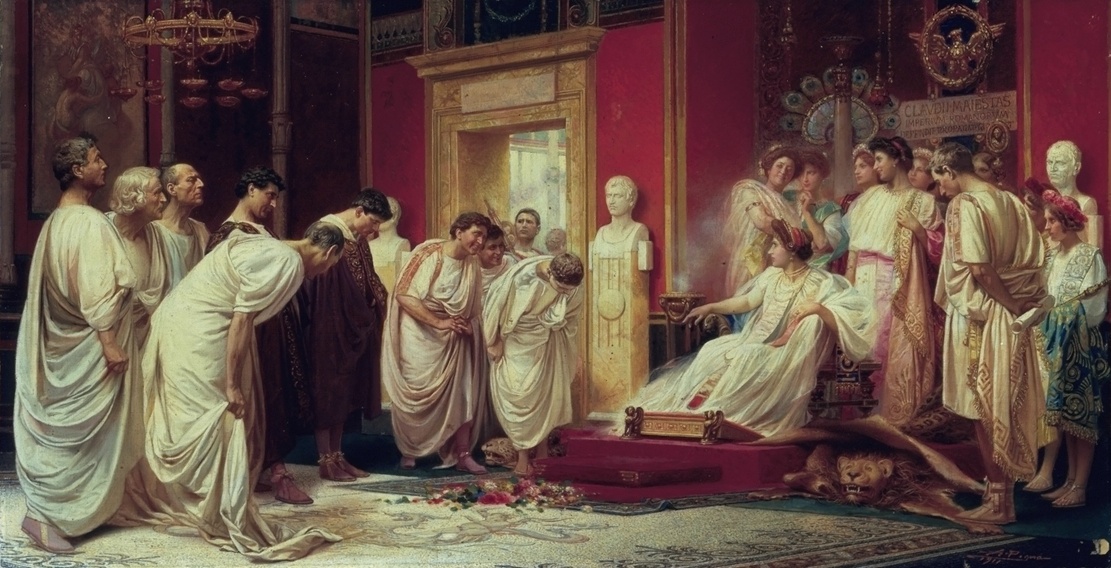
Afterwards, both Claudius and Tyrion had arranged marriages with beautiful young women who did not feel attracted to them: Sansa Stark and Valeria Messalina. Despite being a noble and not a prostitute by profession, Messalina had a historical reputation of great promiscuity. Ancient poet Juvenal tells in one of his Satires that she worked clandestinely in a brothel, under the name “the She-Wolf”. Pliny gives the infamous account of an all-night sex competition against a famous prostitute, won by Messalina (portrayed in I, Claudius). In the end, she even married one of her lovers when Claudius was away from Rome, which led to her execution.
The similarities between Messalina and Sansa, therefore, are few besides their age and their beauty, but the Roman woman, for her promiscuity, may have inspired Martin in the creation of Shae, another of Tyrion’s romantic interests. Shae also resembles Calpurnia, a prostitute that was Claudius’s lover for a large portion of his life, albeit with some significant differences: while Tyrion projected that Shae had feelings for himself that did not exactly match reality, the same is not true of Calpurnia. In I, Claudius, she truly worries about her lover and shows herself as a trustworthy friend and confidant to him in many difficult moments.
Aside from the “inherited” quote about their ancestors, another of Tyrion’s passages in A Song of Ice and Fire finds some resemblance in a dialogue present in Graves’s work. A conversation between the Imp and the Young Griff is quite similar to an exchange between Claudius and Herod Agrippa, also portrayed in the I, Claudius TV series. In this case, however, the roles are reversed:
Herod: Listen Claudius, let me give you a piece of advice.
Claudius: Oh, I thought you’d finished giving advice.
Herod: Well, just one more piece, then I’m done. Trust no one, my friend, no one. Not your most grateful freedman. Not your most intimate friend. Not your dearest child. Not the wife of your bosom. Trust no one.
Claudius: No one? Not even you?(Pulman, Jack (writer). “Fool’s Luck”. I, Claudius. British Broadcasting Corporation, 1976.)
This scene happens right after Claudius is named Emperor by the Praetorian Guard. In the novel Claudius the God, a similar advice takes place when Herod is about to return to Judea, a few months after helping Claudius cement his position as Emperor:
My advice to you, old fellow, is this: never trust anyone! Never trust your most grateful freedman, your most intimate friend, your dearest child, the wife of your bosom, or the ally joined to you by the most sacred oath. Trust yourself only. Or at least trust your fool’s luck, if you can’t honestly trust yourself.
(Graves, Robert. Claudius the god and his wife Messalina. 1935. New York City: Vintage. 1989.)
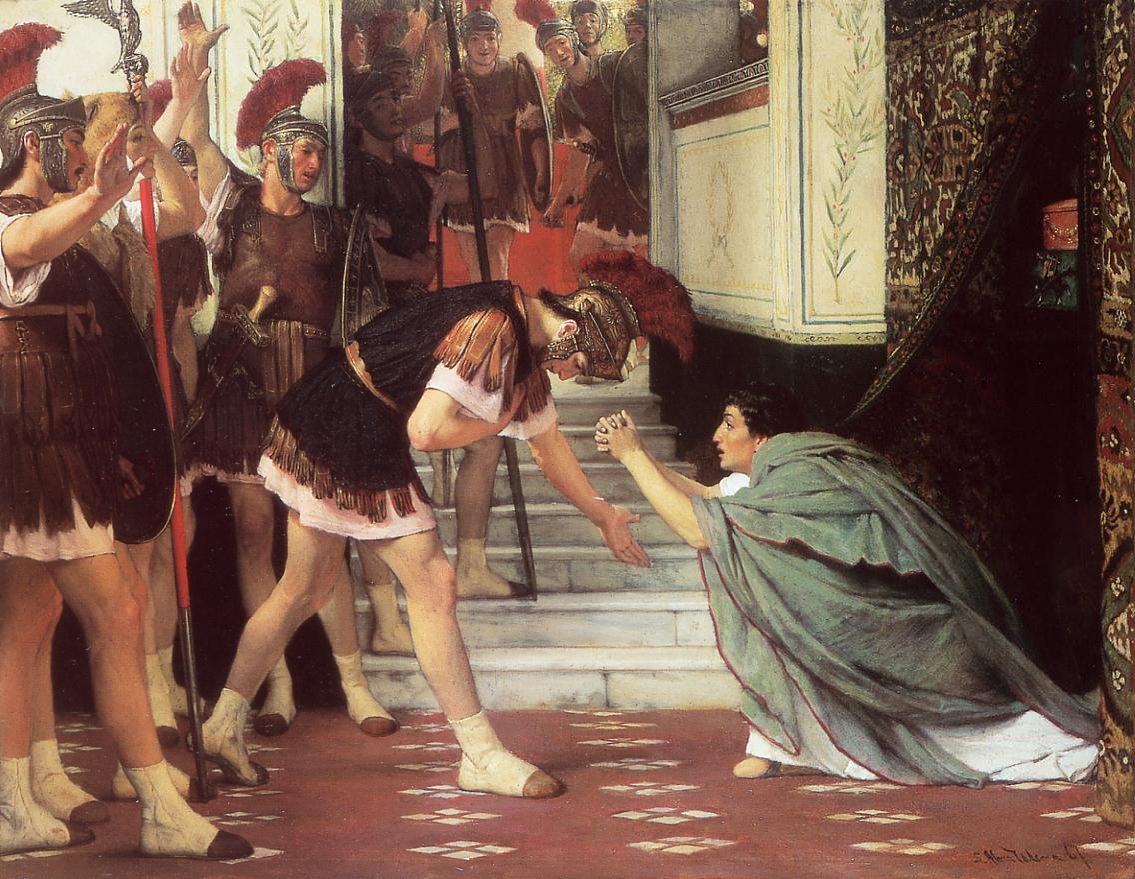
Herod reiterates this advice in further letters, but news arrives to Claudius that his friend was launching an insurrection in Judea. The emperor concludes that his old companion has become his enemy, and that his question to Herod about not trusting even him had been pertinent. This is the dialogue between Tyrion and Aegon that has a similar structure:
Perhaps you should be the fool instead of me. Trust no one, my prince. Not your chainless maester, not your false father, not the gallant Duck nor the lovely Lemore nor these other fine friends who grew you from a bean. Above all, trust not the cheesemonger, nor the Spider, nor this little dragon queen you mean to marry. All that mistrust will sour your stomach and keep you awake by night, ‘tis true, but better that than the long sleep that does not end.”
[…]
The prince stared at the playing board. “My dragon—”
“—is too far away to save you. You should have moved her to the center of the battle.” “But you said—”
“I lied. Trust no one. And keep your dragon close.”
(Martin, George R. R. A Dance with Dragons. New York: Bantam, 2011.)
It is noticeable that Aegon does not ask if he should distrust even Tyrion, likely because the Imp was not a friend to him like Herod was to Claudius. Even so, he learns this lesson during the cyvasse match when Tyrion deceives him, a situation that may extend itself to the bigger picture. There is a considerable possibility that they will be on opposite sides in an imminent conflict between Aegon and Daenerys in The Winds of Winter, with Tyrion as a supporter of the queen, and thus, an enemy of the young man he originally counseled.
Lastly, there is also the coincidence that both Tyrion and Claudius were subjects of mockery by their ruler nephews. Although the Roman was more humiliated than the Westerosi (perhaps due to his personality), both king Joffrey and emperor Caligula turned or tried to turn their uncles into targets for ridicule in their courts due to their physical conditions. As to Caligula, his relationship with Claudius is not the only parallel he finds in A Song of Ice and Fire.

A sadistic, extremely eccentric, paranoid, and cruel ruler, one who makes extravagant decisions, mistreats and humiliates members of his court, is certainly not an unseen figure, either in fiction or history. Gaius Julius Caesar Augustus Germanicus, the successor of Tiberius as Roman emperor, is one of the most prominent representatives of this archetype, and the nickname for which he is known, Caligula, became virtually a synonym for a mad ruler.
Historical sources describe that in the first few months of his rule, Caligula was moderate and noble, but that he afterwards spiraled into cruelty, sadism, extravagance, and sexual perversity. The accuracy of those accounts is questionable, given that they were written many decades after his death, and the historians may have been influenced by a general feeling of animosity towards the Julio-Claudians that would turn gossip and controversial stories into historical fact. However, even if the accounts about Caligula’s follies were exaggerated, their sheer number makes it likely that at least some factual basis existed for them.

Robert Graves chose to transport this “extreme” version of the emperor to his work: his Caligula is described as exceedingly spoiled as a child, with sadistic and homicidal tendencies from a young age. “Caligula” is, in fact, a nickname, a diminutive of caliga, the boot used by the legionnaires, and the nickname comes from the fact that young Gaius accompanied his father Germanicus in his campaigns, fully clothed in a miniature military outfit.
Thus, Caligula became a sort of mascot and lucky charm for the legions of his father, who was beloved both by Roman soldiers and by the people, a fact that ensured the future emperor enjoyed an immense popularity from a young age. According to Graves’s Claudius, this fact also resulted in Caligula becoming even more spoiled. Among examples present in the book of his dangerous potential since childhood, one can mention his direct involvement in his father’s death at seven and setting fire to Claudius’s house at an even younger age.
He later ascended to emperor after murdering Tiberius, who had adopted him as his son, and was quite popular in his first months of reign. After an episode of “brain fever”, however, Caligula became completely insane, acquiring an increasingly unpredictable and abusive behavior, as well as becoming quite eccentric. He believed he had been transformed into a god and behaved publicly as such, going as far as to say, after a military campaign, that he had defeated his “colleague” Neptune.
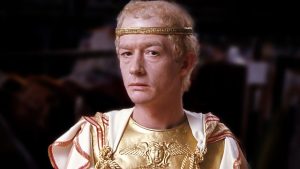
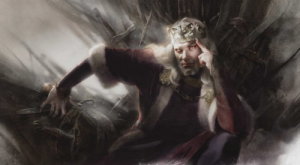
In A Song of Ice and Fire, Aerys II Targaryen is also an exponent of the sadist monarch archetype. Not only for insanity, however, Aerys’s biography finds similarities in Caligula’s. Like the Roman emperor, the Westerosi king was also quite beloved in his youth, being described as generous, handsome and resolute, and possessor of an undeniable charm. The first years of his reign were equally regarded as a period of joy and prosperity for the Seven Kingdoms.
Like Caligula, Aerys already showed some faults in his character and a bit of paranoia as a young man, but a specific episode was crucial for his descent into total madness: the Defiance of Duskendale, when he was made prisoner by Denys Darklyn. It was only after these events that Aerys would receive the epithet of “Mad King”, a telling title in a family historically known for madness-prone members.
In the ground of public works, Caligula initiated a series of construction projects, some of them extremely grandiose and extravagant, such as a floating bridge over the Gulf of Naples and two enormous ships that functioned as floating palaces. Others, however, were indeed useful, such as two of the great Roman aqueducts. Aerys, for his part, also idealized and elaborated grand and majestic works, such as the construction of a new Wall further north (to increase the territory of the Seven Kingdoms), a new King’s Landing built on white marble, and the construction of a subterranean canal under the Dornish deserts. His much-boasted schemes, however, never came to fruition.
Incestuous relations are also a parallel aspect between the Julio-Claudian emperor and the Targaryen king, even though there are obvious differences in their origins. In Aerys’s case, the situation came from a historical family custom to keep the bloodline pure, a trait Martin drew from the Ptolemaic Pharaohs of Ancient Egypt. The marriage to his sister Rhaella came to be by order of his father Jaehaerys II, as a result of a prophecy regarding the “Prince that was Promised”, a legendary hero. On the other hand, incest was taboo in Rome in Caligula’s time, but historians say that he held relationships with his sisters Agrippina the Younger, Drusilla, and Julia Livilla (called Lesbia after her birthplace).
A similarity in the relationships of both monarchs with their sisters is that they were abusive. Suetonius and Cassius Dio tell (and Graves also portrays) that besides his owns incestuous relations with Lesbia and Agrippina, Caligula prostituted his sisters to other men. Drusilla, his favorite, dies of apparently natural causes in the book and there is only a suspicion that Caligula may have murdered her, but in the TV series the homicide is openly portrayed (and brutally performed). Furthermore, not only their sister-lovers were subjected to violence by Caligula and Aerys: both monarchs also harassed and murdered many other less “favored” lovers.
After a streak of abortions, stillborn and babies with premature deaths, Aerys became distrustful of Rhaella, accusing her of being unfaithful. Later, at the pinnacle of madness at the end of his life, he became sexually abusive towards his sister. Rhaella displayed scratches, bruises, and bites over her body, which prompted Jaime Lannister to feel compelled to intervene as a Kingsguard when he heard the queen’s cries as she was raped (being stopped by his colleague Jonothor Darry). At this point, Aerys had developed an obsession with fire that extended to sexual fetish, and he only had relations with Rhaella after watching someone be executed by fire.
One of the victims of such violence played a pivotal role in Robert’s Rebellion: Rickard Stark, whose death, together with that of his son Brandon, also resembles an act of Caligula’s. After the apparent abduction of Lyanna Stark by Rhaegar Targaryen, Brandon went to the Red Keep shouting for the death of the crown prince. For this, he was arrested along with his companions by Aerys, who called their fathers to court to answer for the crime of their sons: conspiracy to kill the prince.
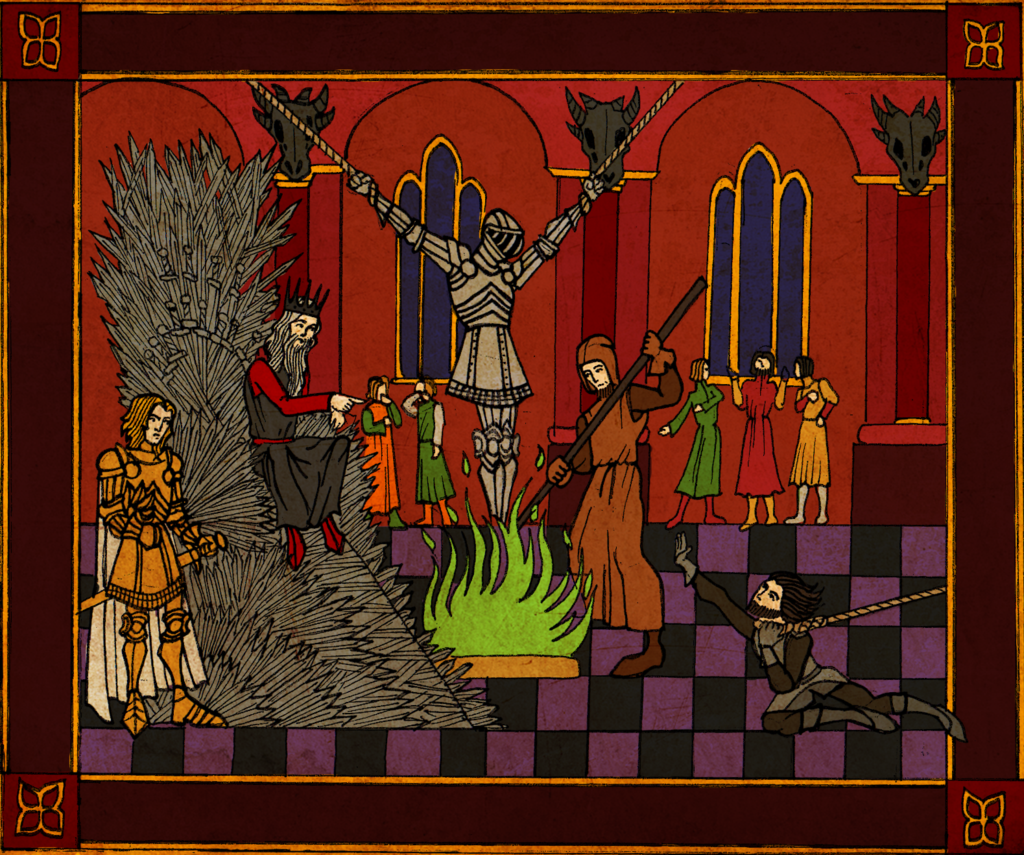
The noble fathers and sons were executed by the king (except for Ethan Glover), and Rickard suffered the most brutal death. He asked Aerys for a trial by combat, which was granted to him. His opponent, however, was not to be a knight of the Kingsguard, but fire itself. He was suspended, dressed in his armor, over a fire, while his son Brandon was forced to watch his father burn, strangling himself as he tried to help. These acts of Aerys towards nobles and the fact that he also demanded the heads of Robert Baratheon and Eddard Stark were the catalysts of the Rebellion, which ultimately resulted in the king’s death.
Based on an account by Cassius Dio in his History of Rome, Graves tells that a man called Bassus made inquiries about Caligula’s habits to a captain of the Palace Guards. For this he was arrested and questioned, admitting his intention to kill the emperor, but not revealing the name of any accomplices. His father, then, was summoned to the palace to bear witness to his son’s execution, and Caligula also ordered his death. The man, in fact, did not know anything about his son’s plans, but listed as conspirators several captains of the guard and close friends of Caligula. Both father and son were, in the end, executed, but the event was indirectly fatal to the emperor.
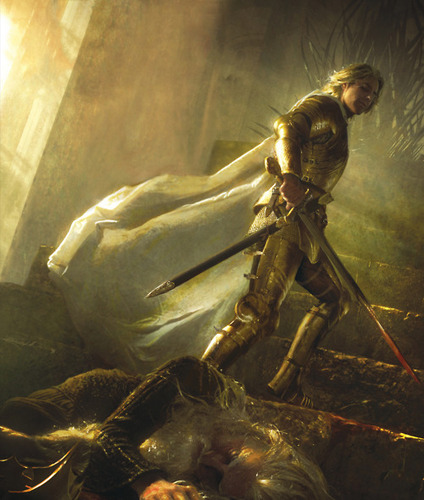
The men who were directly responsible for the deaths of Caligula and Aerys were members of their personal guards. Aerys’s pyromania made him order the Guild of Pyromancers to produce enormous quantities of wildfire; the substance was stored in the undergrounds of King’s Landing, ready to be lit and burn the whole city and its half-a-million inhabitants should the Rebels win. The plan was unsuccessful due to the intervention of Jaime Lannister, a member of Aerys’s Kingsguard, who murdered the king and his Hand, the pyromancer Rossart in cold blood.
Cassius Chaerea was a distinct war veteran serving in the Praetorian Guard under Caligula. He was frequently insulted by the emperor and had intentions of restoring the Roman Republic, and plotted with other praetorians, senators, and knights to murder Caligula at the exit of the games. After Bassus’s conspiracy, however, the emperor became suspicious of all his subordinates. According to Cassius Dio, he pretended to trust each of them individually, telling them he mistrusted the others. They, however, understood this fact and abandoned him to the true conspirators, and in the end Caligula was indeed killed at the exit of the games.
Chaerea’s republican aspirations failed, however. The original plan by the conspirators was to kill all the members of the imperial family, but the Praetorians ended up proclaiming Claudius as emperor. Caligula’s wife and daughter, Milonia Caesonia and Julia Drusilla, were not as lucky as him, being murdered by the conspirators in their quarters. This event, by itself, has a remarkable parallel in the deaths of Elia Martell and her children, Rhaenys and Aegon, during the Sack of King’s Landing, but the similarities go further.
In the I, Claudius TV series, the actual killing of Caesonia by Cassius is not shown onscreen, but her wailing is audible and afterwards, her bloody corpse is visible lying on a bed. Even though this did not necessarily mean rape, the scene may have influenced Martin to write that Elia suffered such violence before being murdered by Gregor Clegane. Graves’s description of Drusilla’s death has a clearer influence on the portrayal of the murders of Rhaenys and Aegon:
He then caught up the little brat who came rushing at him, biting and scratching. He held her by the feet, swung her head against a marble pillar, and so dashed out her brains.
(Graves, Robert. Claudius the god and his wife Messalina. 1935. New York: Vintage, 1989.)
Some said it had been Gregor who’d dashed the skull of the infant prince Aegon Targaryen against a wall, and whispered that afterward he had raped the mother, the Dornish princess Elia, before putting her to the sword.
(Martin, George R. R.. A Game of Thrones. 1996. New York: Bantam, 2002.)
Ser Amory was almost as bestial with Rhaenys. I asked him afterward why it had required half a hundred thrusts to kill a girl of . . . two? Three? He said she’d kicked him and would not stop screaming.
(Martin, George R. R.. A Storm of Swords. 2000. New York: Bantam, 2009.)
As mentioned before, Aerys’s plan of burning King’s Landing failed, but a fire in the capital by order of the monarch has a parallel in another roman emperor almost as infamous as Caligula: Nero, Claudius’s successor. Some classical historians attribute to Nero himself the deflagration of the Great Fire of Rome, in 64 AD. Despite controversies regarding the veracity of these claims, it seems too much of a coincidence that Martin’s Aerys had a similar plan, even if their motivations were different.
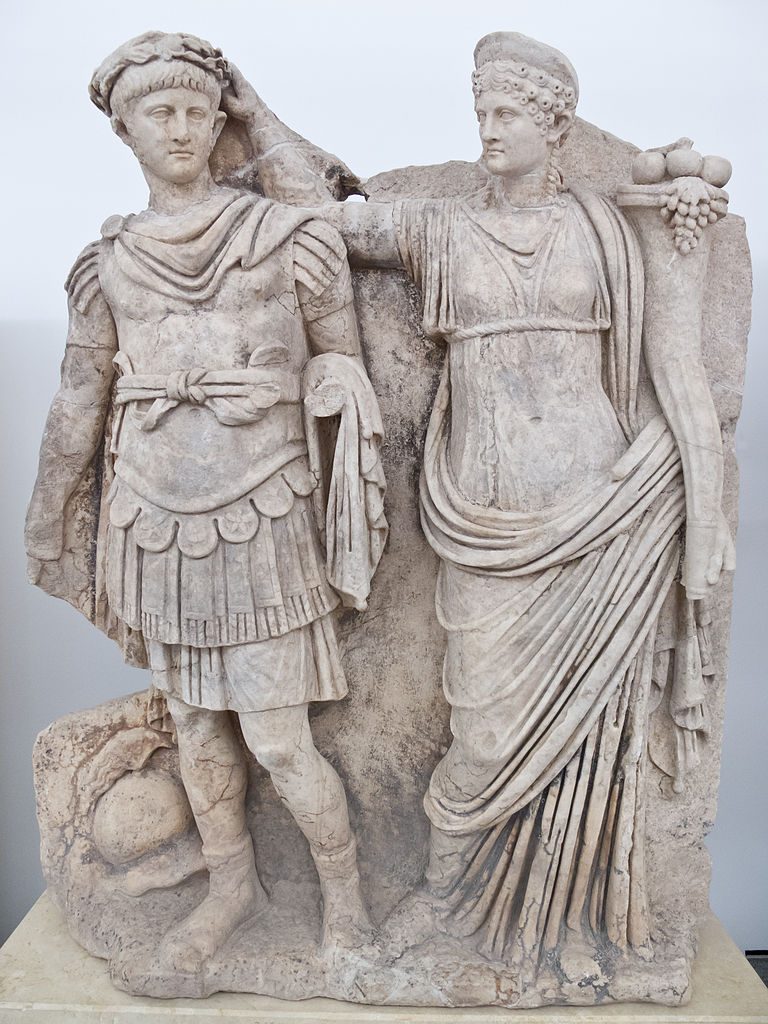
Another prominent character in A Song of Ice and Fire that has parallels with Nero is Joffrey Baratheon. Joffrey also had sadistic tendencies as a child (Stannis recalls that he killed a pregnant cat and opened her belly to see the kittens), and ascended to power at only twelve years old, following the death of his official father Robert Baratheon. Robert received a mortal wound during a hunt after having his wine altered under orders of his wife Cersei, which is similar to Claudius’s death. Agrippina, Nero’s mother and fourth wife of the emperor, is almost unanimously regarded as responsible for the death of her husband. The event meant the ascension of Nero to emperor, also at the young age of sixteen.
The relationship between Claudius and Agrippina had deteriorated in the months leading up to his death, and he had demonstrated the intention of restoring his son Britannicus into the Imperial line. Nero was Claudius’s adopted son and heir, but the return of Britannicus could mean a hindrance to the former’s succession. Similarly, the investigations of Stannis, Jon Arryn, and Eddard regarding the bastardy of Cersei’s children, if disclosed to Robert, would mean the complete downfall of the queen and her children, including Joffrey.
Nero rose to power under Agrippina’s influence, but became gradually independent of his mother. Their relationship became stranded over the years, and the situation culminated in a matricide when Nero ordered Agrippina killed in an arranged shipwreck. The relationship between Joffrey and Cersei did not reach such an extreme point, but neither the mother — previously influential and having played a pivotal role in her son’s crowning — held the power she wanted over her son. One of Joffrey’s first acts of transgression was the execution of Eddard Stark, which opposed the designs of Cersei, who afterwards has increasing difficulties in restraining her son’s sadistic and reckless impulses.

The Biographical correspondences between characters in the two works are not restricted to Westerosi and Roman high nobilities. Petyr Baelish, originally holder of one of the smallest and least powerful lordships in the Seven Kingdoms, apparently inherited traits and biographical events from a character in the early Roman Empire who is also relevant in I, Claudius: Lucius Aelius Sejanus, an ambitious soldier who became powerful and influential during Tiberius’s time as emperor.

By birth, Sejanus was a member of the equestrians (also called “knights”), the lowest of the Roman aristocratic classes, below patricians and senators. His father, Strabo, was named prefect of the Praetorian Guard, the elite unit in the Roman army, one of the highest offices a knight could achieve in the Empire. Sejanus joined the Praetorians at a young age, also being named prefect after his father was designated governor of Egypt. As prefect, Sejanus became a counselor and confidant of Tiberius, then emperor, functioning as his right-hand man and being responsible for many of the Empire’s most important decisions. Eventually, when Tiberius distanced himself from most matters of State, Sejanus acted in a very similar fashion to the Hand of the King in Martin’s universe.
Baelish ascended in the Seven Kingdoms through apparent friendship with the high nobility, showing himself as powerless and helpful to everyone. Sejanus, on the other hand, rose through force due to his status as praetorian prefect, being more feared than loved. Still, Littlefinger’s ambition and rising influence in King’s Landing considerably resemble Sejanus’s meteoric rise in Rome, and correspondences between both characters goes even further.
Even though Sejanus amassed much power by controlling a large military contingent, he was still a knight, and he had higher ambitions for himself. He intended to solidify his relations with the imperial family through marriage, and his first attempt to that end was arranging a marriage between his daughter and a son of Claudius (who was not yet emperor). The boy died of asphyxiation before the wedding, an event that in Graves’s novel is attributed to Livia.
Sejanus did not give up, however, and set himself to seduce Claudius’s sister Livilla. Divorcing his wife Apicata, he convinced her of his love, and they kept a longstanding extramarital affair. Livilla’s husband was Drusus, Tiberius’s son and heir-apparent since the death of Germanicus, and therefore a hindrance to the designs of Sejanus, who intended, through marriage, to succeed Tiberius as emperor. With Livilla strongly under his influence, Sejanus convinced her to remove her husband. He schemed for Drusus to physically strike him in public view, thus making their enmity notorious and it is believed that with help from Livilla’s physician, Drusus was poisoned, dying of apparently natural causes. Thereby, the way was clear for a betrothal between Sejanus and Livilla.
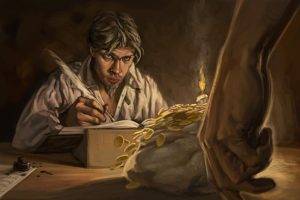
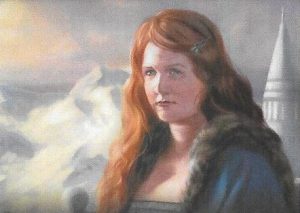
Seducing a woman of the high nobility and persuading her to murder her husband in order to advance his own purposes of social ascension is a resource Petyr Baelish knows well. Lysa Arryn had harbored feelings for Littlefinger since childhood, and he convinces her that he is also in love and they keep an extramarital relationship. Eventually, he manipulates Lysa into murdering her husband Jon Arryn through poisoning, by making her think it would be the only way her son Robert would not be taken away from her. Incidentally, Jon had been the one who advanced many of Petyr’s interests and presence in court (through Lysa’s influence).
The final acts of these relationships are not the same, however. Before being able to marry Livilla, Sejanus was executed under orders of Tiberius, when he understood the real intentions of his right-hand man. According to historian Josephus, it was Antonia, Livilla’s (and Claudius’s) mother herself, who informed the emperor of Sejanus’s and her daughter’s activities. In I, Claudius, Graves adopts this version together with the account by Cassius Dio, according to which Livilla was handed to her mother by Tiberius, and Antonia locked her away in a room and starved her to death.
Baelish, on the other hand, was more successful in his ruse. He ensured a regional overlordship to himself, being named by King Joffrey as Lord of Harrenhal and Lord Paramount of the Trident, which elevated his level of nobility (even if only nominally) and allowed for his marriage to Lysa. After the wedding, however, he removed his wife by throwing her out the Moon Door, blaming singer Marillion for the act with the support of a disguised Sansa Stark.
Yet another analogous point may reside in the offspring of these affairs. It is possible that relationship between Sejanus and Livilla occurred even before she gave birth to twins, who were officially Drusus’s sons. It was rumored, however, that they, in truth, were fathered by Sejanus. In a similar way, there are readers of A Song of Ice and Fire who theorize that the true father of Lysa’s son Robert is not truly Jon Arryn, but Littlefinger.

In addition to parallels found in characters’ biographies, there are other passages and situations in A Song of Ice and Fire that resemble events and elements of I, Claudius and Roman history in a broad sense. One of the most prominent cultures in Martin’s universe, the Valyrian civilization itself, resembles very much the Roman one, something that was admitted by the author himself.
The historical conflicts between Rome and Carthage also seem to find correspondence in the wars between Valyria and the Ghiscari Empire, and the Valyrian roads, also called dragon roads, are a clear reference to the Roman roads. The popular fighting pits in the slaver cities of Meereen, Yunkai, and Astapor also resemble the gladiatorial games that were popular in Roman history, even though George reminds us that the games may have originated with the Etruscans, the Italian people that the Romans conquered and from whom they inherited many customs.
An event that had many real-world inspirations is the Doom of Valyria, in which the destruction of the city was caused by explosions, earthquakes, and eruptions in the Fourteen Flames, the volcanic chain upon which it stood. In terms of the size of the catastrophe, the Valyrian cataclysm finds a better correspondence in the eruption of Krakatoa in Indonesia, 1883. Martin has stated that in addition to Krakatoa, the volcanic eruptions that destroyed New Zealand’s Pink and White Terraces were also an influence. However, the famous destruction of the Roman cities of Pompeii and Herculaneum due to the eruption of Mount Vesuvius is also an inspiration that was admitted by Martin, as well as the very fall of Rome in a broader sense.
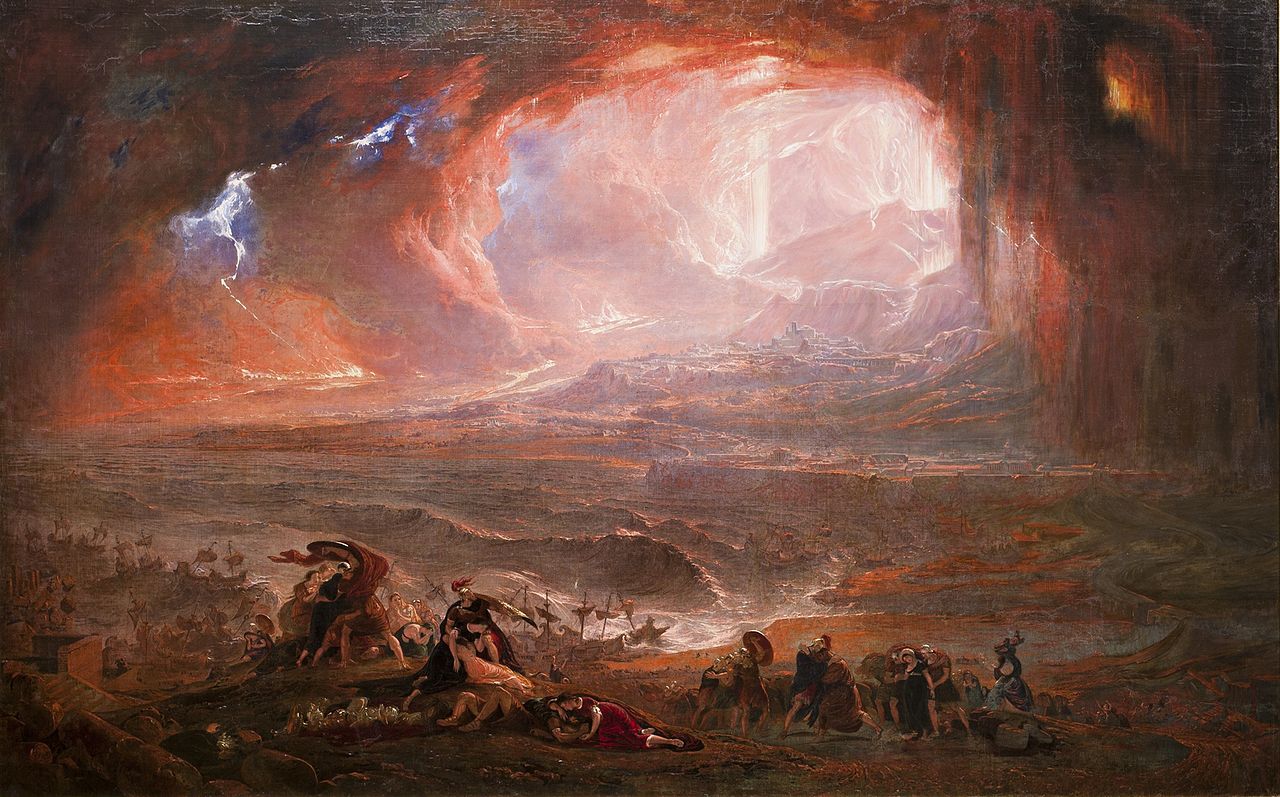
The story of the Targaryen migration to Dragonstone also bears a remarkable resemblance to one of the foundation myths of Rome. Virgil’s Aeneid tells the legendary story of the titular Aeneas, a Trojan who fled his homeland after it was destroyed by the Greeks towards Italy, where he became an ancestor to the Romans. According to Greek mythology, the fall of Troy was predicted by Cassandra, a cursed priestess afflicted by a curse that made her utter true prophecies that were never believed. The first Targaryen in Westeros was Aenar, whose name is strikingly similar to Aeneas. In addition, Aenar’s flight from Valyria towards Dragonstone was also motivated by a prophecy about the destruction of his homeland, this one made by his daughter Daenys and discredited by the Freehold’s other dragonlords.
The geography of the Westerosi city founded by Aenar’s descendants, King’s Landing, also bears a likeness to that of Rome. King’s Landing’s terrain is notably marked by its three hills — of Aegon, of Visenya, and of Rhaenys — that divide the city in regions. They resemble the classical seven hills of Rome — the Aventine, the Caelian, the Capitoline, the Esquiline, the Palatine, the Quirinal, and the Viminal — which also divided the capital.
Almost on the other side of Martin’s fictional world resides one of the most well-known references to the Roman world: the Wall. The gigantic structure at the North of Westeros admittedly came to Martin’s mind when he visited the Roman wall in North England, whose construction started with emperor Hadrian. Martin’s explanation of the fact makes his fascination with history very clear:
How did you come up with the Wall?
The Wall predates anything else. I can trace back the inspiration for that to 1981. I was in England visiting a friend, and as we approached the border of England and Scotland, we stopped to see Hadrian’s Wall. I stood up there and I tried to imagine what it was like to be a Roman legionary, standing on this wall, looking at these distant hills. It was a very profound feeling. For the Romans at that time, this was the end of civilization; it was the end of the world. We know that there were Scots beyond the hills, but they didn’t know that. It could have been any kind of monster. It was the sense of this barrier against dark forces – it planted something in me. But when you write fantasy, everything is bigger and more colorful, so I took the Wall and made it three times as long and 700 feet high, and made it out of ice.(Gilmore, Mikal. “George R.R. Martin: The Rolling Stone Interview”. Rolling Stone, April 2014.)
A legend associated with the Wall is that of the Night’s King, the thirteenth Lord Commander of the Night’s Watch who allegedly declared himself king and ruled for thirteen dark years together with his queen, whose skin was cold as ice. After he was defeated through a joint effort by the King of Winter and the King-Beyond-the-Wall, it was found that he had been making sacrifices to the Others, and all records of him were destroyed and his very name was forbidden and forgotten. This practice is akin to the Roman damnatio memoriae (“condemnation of memory”), which attempted to erase every trace of a person’s existence as punishment for crimes they had committed. Statues of the person were taken down, and their name was removed from every public place in which they were written (including coins). It is unknown if a “perfect” erasure ever existed (as it would be logically impossible to know), but it is known that the Roman Senate issued a damnatio memoriae of Sejanus and Messalina, for example.
![]()
Targaryen similarities with Roman history exist not only in their arrival to Westeros but also in an event that contributed to eventual death or exile for the members of the dynasty. Ancient Roman tradition tells the story of Lucretia, a lady whose fate played a pivotal role in the transition from the Roman Kingdom to the Roman Republic. The stories vary, being the case more of a legend based on actual facts than a historical account, but the main points are coincidental in most versions. Its correspondent of sorts in the Seven Kingdoms is the abduction of Lyanna Stark by Rhaegar Targaryen, one of the most emblematic and mysterious incidents in A Song of Ice and Fire.
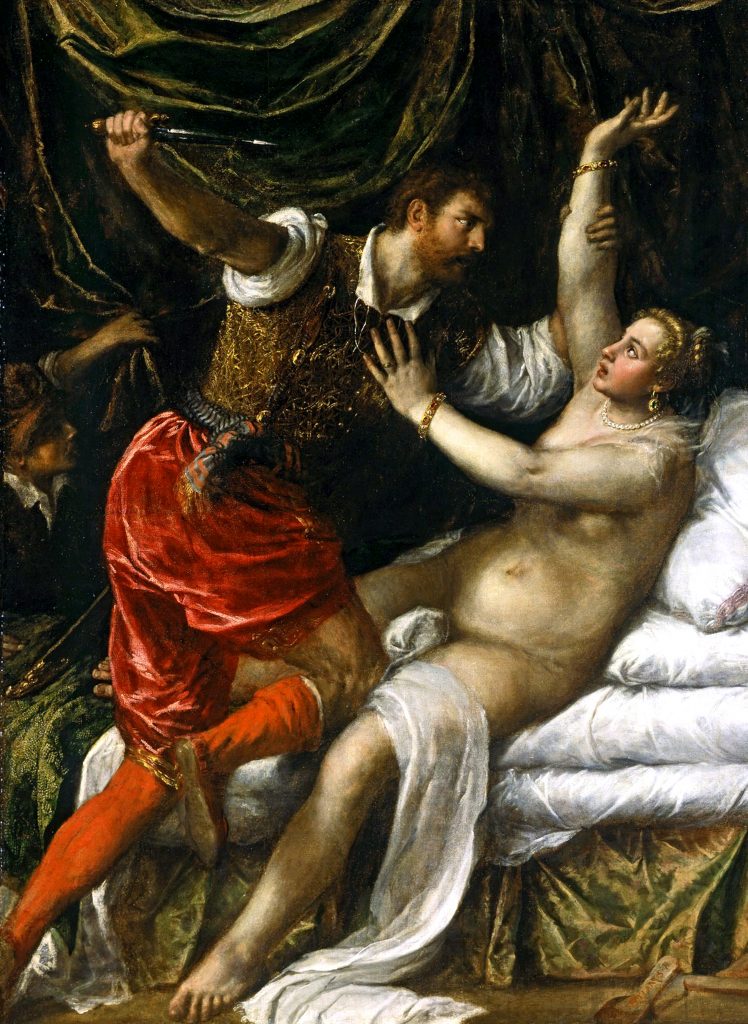
Legend tells that Tarquin the Proud, seventh King of Rome, sent his son Sextus Tarquinius to the city of Collatia, where his cousin Collatinus and his wife Lucretia lived. The versions diverge as to the details, but the common point is that Sextus, being attracted by his cousin’s wife, entered her chambers and raped her. The following day, Lucretia cast herself down in supplicant’s position in front of her father (the prefect of Rome), telling him about what happened and calling for vengeance, and killing herself afterwards.
This event was the catalyst for a revolution that resulted in the expulsion of King Tarquin and his family, and in the institution of the Roman Republic, with rebel leaders Lucius Junius Brutus and Collatinus as its first consuls. Later, Collatinus would be forced into exile, as he was himself a member of the Tarquin family, which became strongly rejected by the people. Despite being a crucial event, the tragedy of Lucretia was not the only motivation for the overthrow of the Roman monarchy: Tarquin, despite having achieved military victories, had become an unpopular king because of his excesses and lack of deference to both the Senate and his advisors, as was the custom.
In the Seven Kingdoms, dishonor done by the king’s son against a lady (promised to a cousin of his), together with the excesses of the monarch himself towards the nobles, represented the catalysts for a rebellion that culminated in the fall of their dynasty. Martin, naturally, gives his own touch to events and subverts them in many points. It may be discovered that the relationship between Rhaegar and Lyanna was consensual, but the general outline in both stories is strikingly alike.
![]()
It is hard not to associate the tragic fate of Lyanna and Rhaegar’s offspring, Jon Snow (who I will treat as such, even though there is not yet categorical confirmation in the books), with one of the most infamous episodes in Roman history.
On the 15th day of March of the year 44 BCE, dictator in perpetuity Julius Caesar was assaulted and killed by about sixty conspirators, that stabbed him at the entrance of a meeting of the Senate of Rome. Led by Marcus Junius Brutus, Gaius Cassius Longinus and Decimus Junius Brutus Albinus, the senators opposed the political changes planned by Caesar, whom they considered a tyrant. According to Plutarch and Suetonius (and also in Shakespeare’s Julius Caesar), Caesar had been forewarned by his wife Calpurnia and by a seer about a harm against him in the Ides of March (the fifteenth day of that month), warnings he disregarded.
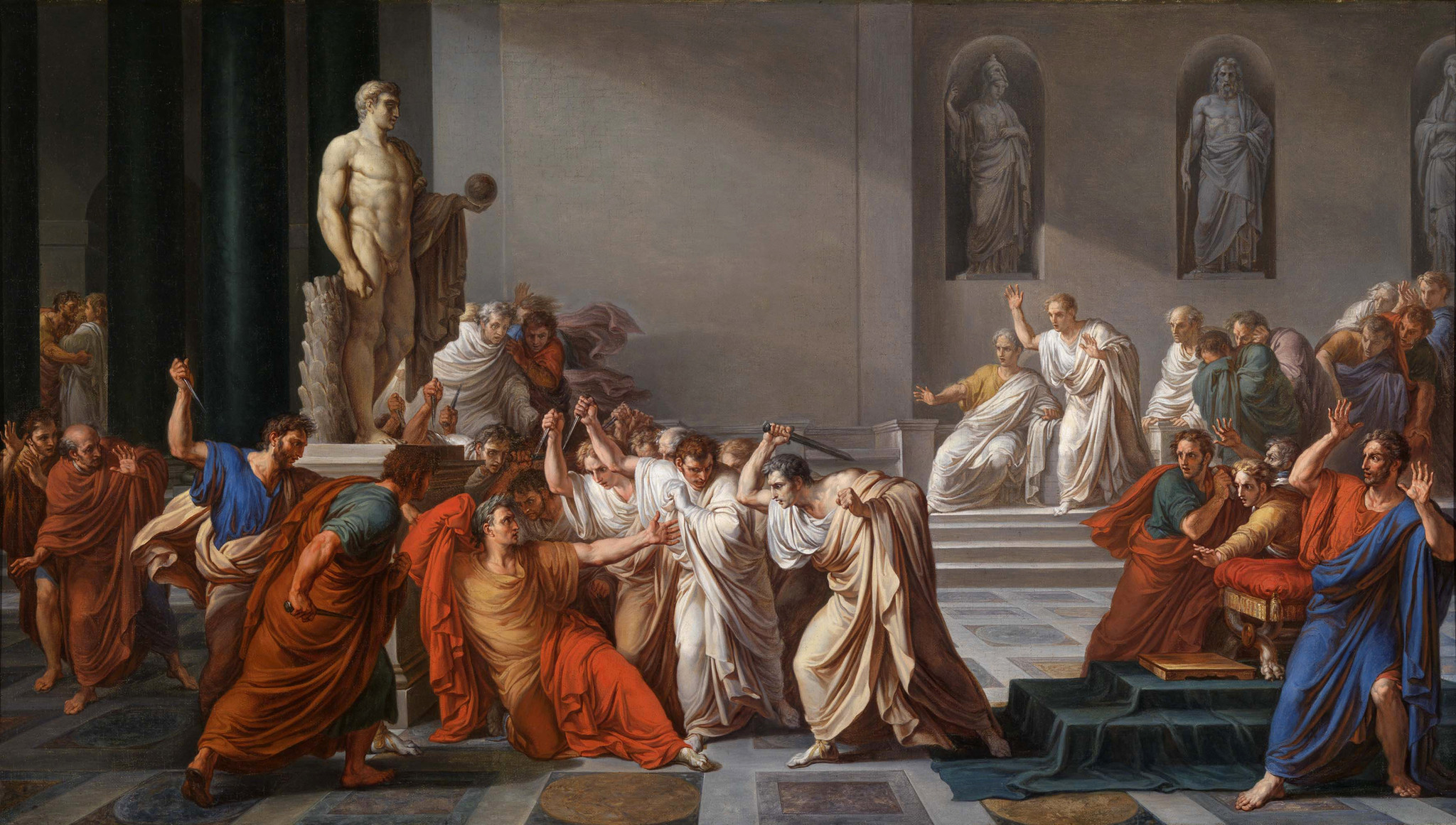
In 300 AC, Lord Commander of the Night’s Watch Jon Snow was assaulted and killed by many conspirators, that stabbed him at the exit of a meeting in the Shieldhall of Castle Black. Led by Bowen Marsh, who claimed they were doing it “for the Watch”, the men opposed changes in the order made by Snow, whom they considered an oath-breaker and traitor. During A Dance with Dragons, Jon Snow had been forewarned by priestess Melisandre about harm against him in the form of daggers in the dark, a warning he disregarded.
An event associated with Caesar’s death also inspired a phenomenon in the Westerosi and Essosi sky: the comet seen by the first in time in A Game of Thrones and frequently mentioned during A Clash of Kings. In the real world, Caesar’s Comet was the most famous comet of antiquity, and possibly the brightest one in recorded history. The various interpretations for the comet’s appearance made by characters from Essos and Westeros resemble the historical attribution of meanings to these phenomena by the ancients.
Caesar’s Comet was visible for seven days and was interpreted by Romans as a sign that the recently deceased dictator had ascended to the heavens as a god. In Shakespeare’s Julius Caesar, Calpurnia says that “When beggars die, there are no comets seen; The heavens themselves blaze forth the death of princes”. Martin has explicitly said that his comet was inspired by the passage in Shakespeare’s play (and also by the comets in the sky while he was writing, namely Hyakutake and Hale–Bopp).
![]()
Caesar’s co-triumvir Marcus Licinius Crassus was a general and politician that played a pivotal role in the transition from the Roman Republic to the Roman Empire, and another figure with notable cases when parallel events are being discussed. One of the richest men in history, his life had at least two episodes that find apparent references in A Song of Ice and Fire.
Crassus gained prominence after being victorious over the rebellious slave forces under gladiator Spartacus. In the Battle of the Siler River, the legions commanded by Crassus achieved a decisive victory and captured six thousand slaves alive. They were subsequently crucified along the Appian Way, one of the most important Roman roads, under orders of the general (a scene depicted in the 1960 film Spartacus, for which Martin has also declared appreciation). A vaguely similar episode happens in A Storm of Swords, when the Great Masters of Meereen order the nailing of 163 slave children onto the mileposts along the road between Yunkai and their city, as a “welcome” for Daenerys Targaryen. In revenge, she also nails 163 Great Masters after conquering Meereen.
Later, Crassus formed the Triumvirate with Pompey Magnus and Julius Caesar , and in the territorial division received the province of Syria, seemingly a source of great wealth. Crassus, however, had ambitions of new military glories to rival his co-triumvirs, and decided to invade Parthia, also a rich land. He was defeated in battle despite his numerical superiority and ended up dying during an unsuccessful attempt by his men to negotiate with the enemy. A story later emerged, however, that said that the Parthians had executed Crassus by pouring molten gold into his mouth, representing his insatiable thirst for wealth.
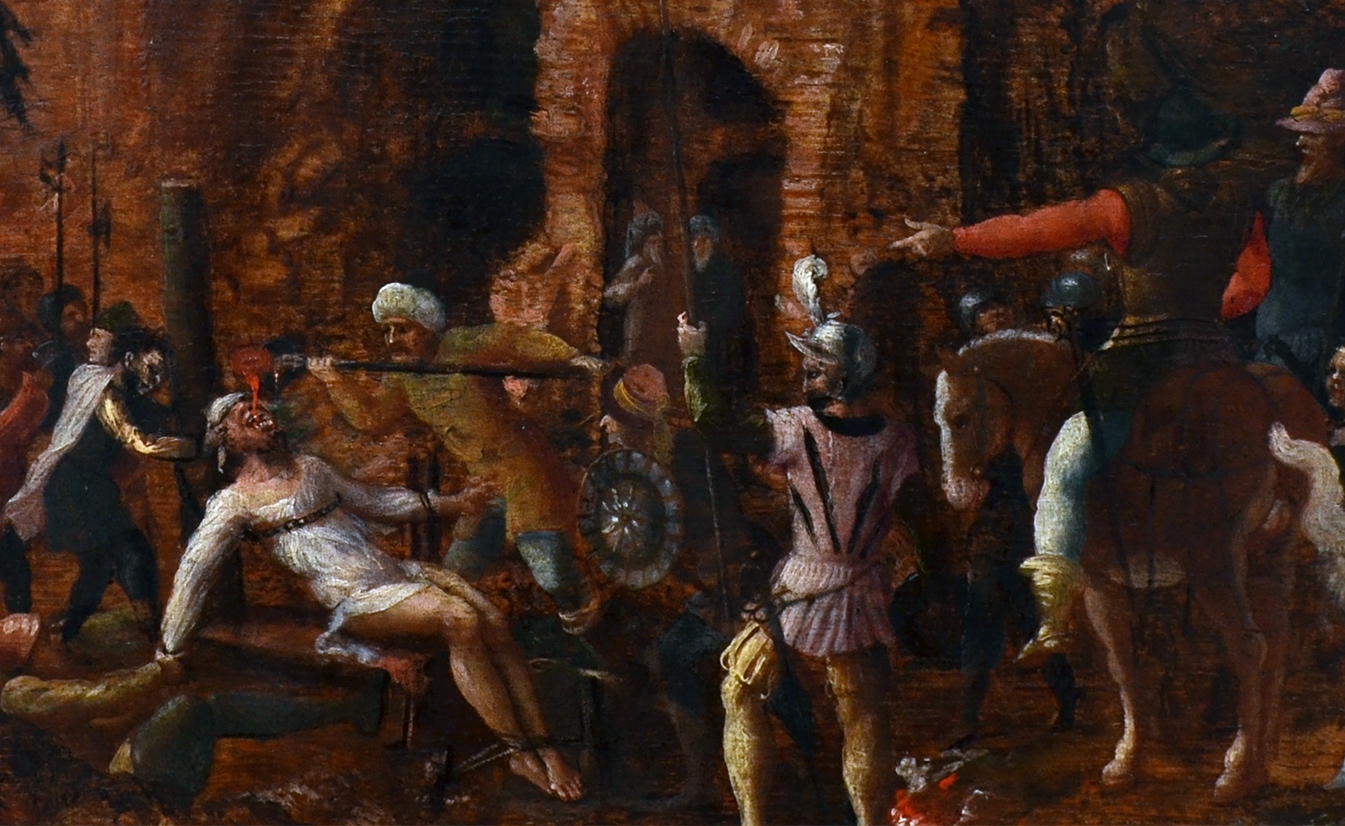
Interestingly, similar stories are told about two other Romans, one of whom precedes Crassus and the other after him. The former is Manius Aquillius, a politician and general who also distinguished himself in the suppression of a slave revolt. Afterwards, he was sent to Asia Minor as an ambassador, but involved himself in disputes between regional monarchs and was captured by Mithridates, King of Pontus, in 88 BC. After being forced into penances, he was eventually executed by having molten gold poured down his throat. The other case of such nature involves emperor Valerian, in the 3rd century AD. Emperor Shapur of the Sassanid Empire (successor of the Parthian Empire) supposedly captured and humiliated Valerian, eventually forcing the Roman emperor to swallow molten gold to kill him. It’s almost unnecessary to say, but the possible reference to these stories found in A Song of Ice and Fire is the death of Viserys Targaryen: the “Beggar King”, after being humiliated by the Dothraki, had molten gold poured over his head by Khal Drogo.
![]()
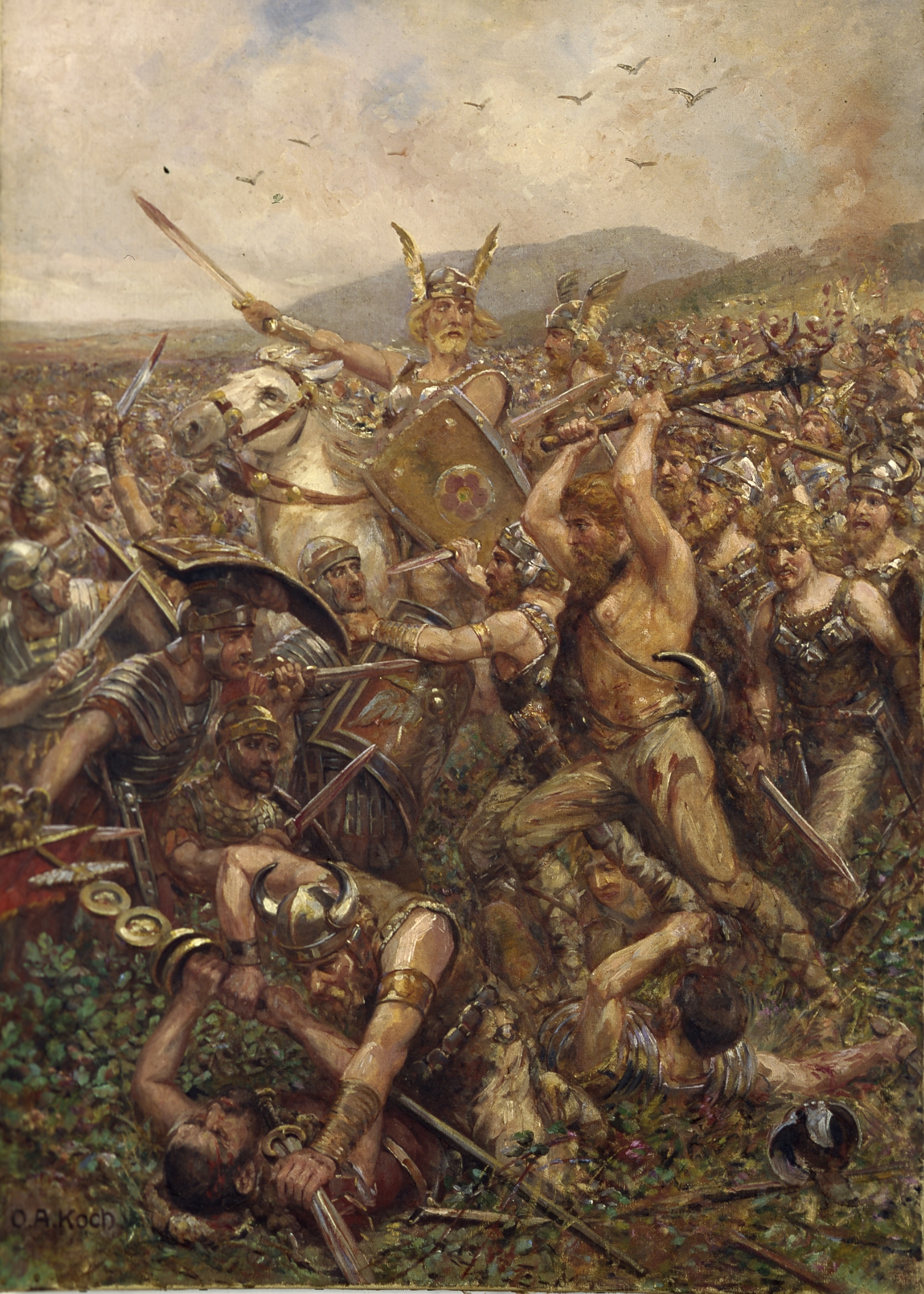
Arminius (or Hermann, his German name used in I, Claudius) is another famous general related to Rome whose biography seems to find a counterpart in A Song of Ice and Fire. His father, chief of the Germanic tribe of the Cherusci, accepted an offer by Tiberius for his son to be raised and instructed in Rome in exchange for a military alliance. Arminius received military education, obtained Roman citizenship and the status of equestrian before returning to Germania. Once there, he launched a campaign in which he united various Germanic tribes to fight against the Romans, while pretending to still be their ally. Finally, Arminius commanded the Germans in the famous Battle of the Teutoburg Forest. The engagement, in which three Roman legions were annihilated, became known as the Varian Disaster (after Varus, the Roman commander), and is regarded by historians as Rome’s greatest defeat — the scene in which Augustus reacts to the news of the disaster in I, Claudius is particularly iconic.
Martin writes in his novels of a character that is brought up in a more organized culture than his original one, but returns to his tribal people and unites them to attack those who raised and trained him. This is, of course, Mance Rayder, son of a wildling woman and a man of the Night’s Watch. At first raised among his mother’s people, he was taken by the black brothers and grew up among them, being named Ranger (and considered the best of them by Qhorin Halfhand). Tired, however, of the frugal life of the black brothers, Mance returns to the free folk, takes the title of King-Beyond-the-Wall, and launches a campaign to reunite the various clans, tribes, and groups of wildlings. Trying to flee from the Others, he engages in conflict with the Night’s Watch in the process.
Mance Rayder was not as successful as Arminius, with his huge forces being defeated in the Battle of Castle Black. In this sense, he resembles another historical figure that led an insurgency against Rome: Tacfarinas, a Numidian who deserted the Roman army and united various Berber tribes in North Africa. In I, Claudius, the titular character says that he was present in the battle between the forces of Tacfarinas and those of Roman governor Marcus Furius Camillus. Claudius tells that he was never so proud of being a Roman as in that day, when the Roman army, outnumbered by five to one, defeated the enemy with organization and discipline. Similarly, Mance’s defeat in the Battle of Castle Black, even with an enormous numerical superiority, was largely due to the disorganization of the wildlings and the discipline of the forces of Stannis Baratheon and the Night’s Watch. Mance, therefore, appears to be an amalgamation of various historical figures and events, of course, with original touches by Martin.
![]()
Still on the matter of non-Roman historical characters present in Graves’s novels, in Claudius the God the author details the personality and the past of an old friend of Claudius’s, the previously mentioned Jewish king Herod Agrippa (played in the TV series by James Faulkner, Game of Thrones’s Randyll Tarly). At one point, Claudius discourses about the origins of the family of his friend, the last King of Judea and the grandson of Herod the Great. The description of this Herod’s life and death made by Graves finds parallel elements in Martin’s Aegon IV:
To cut a long story short, this Herod the Great, whose father had meanwhile died of poison, was made King of the Jews by the joint order of my grandfather Antony and my granduncle Augustus (or Octavian, as he was then called) and ruled for thirty years, with severity and glory, over dominions that were constantly being enlarged by Augustus’s bounty. He married no less than ten wives in succession, among them being two of his own nieces, and finally died, after several ineffectual attempts at suicide, of perhaps the most painful and disgusting disease known to medical science. I never heard that it had any name but Herod’s Evil or that anyone else had ever suffered from it before him, but the symptoms were a ravenous hunger followed by vomiting, a putrescent stomach, a corpse-like breath, maggots breeding in the privy member and a constant watery flow from the bowels. The disease caused him intolerable anguish and inflamed to madness an already savage nature. The Jews said that it was their God’s punishment for Herod’s two incestuous marriages.
(Graves, Robert. Claudius the god and his wife Messalina. 1935. New York: Vintage, 1989.)
The reign of this unworthy monarch came to an end in 184 AC, when King Aegon was nine-and-forty years of age. He was grossly fat, barely able to walk, and some wondered how his last mistress—Serenei of Lys, the mother of Shiera Seastar—could ever have withstood his embraces. The king himself died a horrible death, his body so swollen and obese that he could no longer lift himself from his couch, his limbs rotting and crawling with fleshworms. The maesters claimed they had never seen its like, whilst septons declared it a judgment of the gods. Aegon was given milk of the poppy to dull his pain, but elsewise little could be done for him.
(Martin, George R. R., et al. The World of Ice and Fire. New York: Bantam, 2014.)
To be sure, Aegon the Unworthy has also been inspired by English king Henry VIII, especially with regard to his various wives and the morbid obesity at the end of his life. Still, the correspondence between Aegon and Herod is noticeable, both in the many lovers and in the fatal disease, unique and unknown to doctors, and interpreted by religious figures as divine punishment for excesses practiced in life.
![]()
In discussions about a early version of this text on Reddit, user Lardt pointed out the case of Marcus Sergius, a general during the Second Punic War. About him, Pliny declared the following (when discussing “instances of extreme courage”):
No person living, in my opinion at least, ever excelled M. Sergius, although his great-grandson, Catiline, tarnished the honours of his name. In his second campaign he lost his right hand; and in two campaigns he was wounded three and twenty times; so much so, that he could scarcely use either his hands or his feet; still, attended by a single slave, he afterwards served in many campaigns, though but an invalided soldier. […] On four occasions he fought with his left hand alone, two horses being slain under him. He had a right hand made of iron, and attached to the stump, after which he fought a battle, and raised the siege of Cremona, defended Placentia, and took twelve of the enemy’s camps in Gaul.
(Pliny the Elder. The Natural History. Translated by John Bostock and H.T. Riley. Perseus Digital Library.)
The character in A Song of Ice and Fire that bears resemblance to the valorous Marcus Sergius is Jacelyn “Ironhand” Bywater, a member of the City Watch of King’s Landing and later its Commander. Known as a brave and honorable man, Bywater was knighted by King Robert after fighting with distinction in the Siege of Pyke, where he lost his right hand, after which he starts using an iron hand strapped to his wrist and acquires his nickname. Aside from Bywater, Jaime Lannister also loses his right hand, chopped off by sellsword Zollo. Jaime orders the forging of a prosthetic hand, made of solid gold, and the armorer tells him that he will be known as “Goldenhand”.
![]()
Likenesses between the works are also found in seemingly random expressions and sentences uttered by the characters (some of them already mentioned in previous sections). One case of a figure of speech that draws attention is that of the “Claudian tree”, mentioned numerous times by Claudius during the novels and also referenced in two episodes of the TV series:
Livia was of the Claudian family, one of the most ancient of Rome, and so was my grandfather. There is a popular ballad, still sometimes sung by old people, of which the refrain is that the Claudian tree bears two sorts of fruit, the sweet apple and the crab, but the crabs outnumber the apples.
(Graves, Robert. I, Claudius. 1934. New York: Vintage, 1989.)
The Claudian family is, from Tiberius to Nero, the first dominant dynasty in the Roman Empire. Interestingly, there is a famous saying about the first dominant dynasty in Westeros, House Targaryen, that is very alike to the proverb about the Claudians:
I am no maester to quote history at you, Your Grace. Swords have been my life, not books. But every child knows that the Targaryens have always danced too close to madness. Your father was not the first. King Jaehaerys once told me that madness and greatness are two sides of the same coin. Every time a new Targaryen is born, he said, the gods toss the coin in the air and the world holds its breath to see how it will land.
(Martin, George R. R. A Dance with Dragons. New York: Bantam, 2011.)
Sentimental reactions of some characters to the deaths of Germanicus and Renly Baratheon also stand out as textually similar passages. After the death of his brother, who was quite beloved by the people, Claudius says: “I heard a man in the street say that it was as though the sun had set and would never rise again”. A similar quote in Martin’s work takes place in A Storm of Swords, said by Loras Tyrell about his lover: “When the sun has set, no candle can replace it”.
Martin may have also hidden a reference in a wordplay of sorts involving Locusta, a notorious poisoner in Ancient Rome. Locusta formed with Martina and Canidia the most famous trio of these professionals, and according to ancient historians, was directly responsible, under Agrippina’s orders, for the death of Claudius himself (among others).
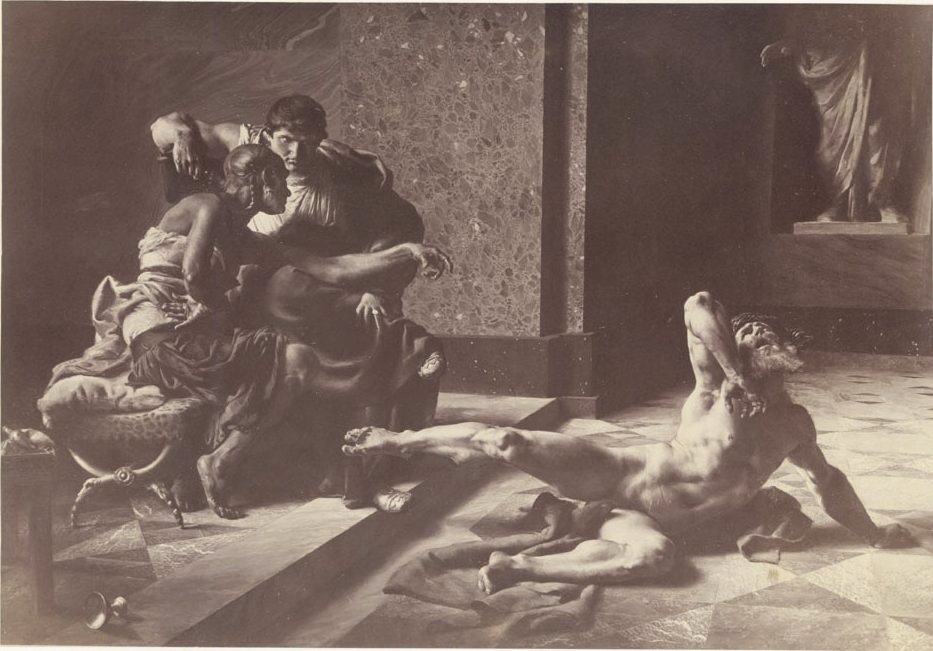
The coincidence here resides in her name: the word locusta, in Vulgar Latin, referred both to locusts and lobsters, and originated the English word for the former. In A Dance with Dragons, an infamous episode happens involving poisoned locusts, apparently destined to Daenerys Targaryen. Given the notoriety of the historical poisoner and Martin’s interest in Roman history, it is hard not to identify a connection in this coincidence.
Still on the same topic, Tyrion’s discovery of poisonous mushrooms in Illyrio’s manse in Pentos, which he picks and keeps inside his boot, is also relevant. Tyrion becomes suspicious when the Magister’s cooks prepare mushrooms, and many times during A Dance with Dragons thinks of using his own, either to kill other characters or himself. In the end, he serves them in a soup to the infamous Nurse. Coincidentally (or not), it is believed that to kill Claudius, Locusta sprinkled the poison in mushrooms that were served to him in his supper.

The mention of mushrooms takes us to another similarity between Martin’s fictional universe, Roman history, and Graves’s historical fiction. In many parallel cases in his novels, Martin did not only borrow from Graves but directly or indirectly from the ancient Roman historians whose works served as basis for I, Claudius.
In The Princess and the Queen, The Rogue Prince, The World of Ice and Fire, and The Sons of the Dragon, the reader learns the concept of “fake history” by Martin: the novellas and the book are not narratives in the regular sense, but written as if they were historical accounts within the fictional universe. They are accounts compiled by secondary sources from that world, Archmaester Gyldayn and Maester Yandel. In this sense, Yandel and Gyldayn were inspired by the ancient historians from the real world such as Suetonius, Plutarch, Pliny the Elder, and Cassius Dio, who lived and published their works in the 1st and 2nd centuries (CE), and told about events that happened decades and even centuries before.
Parts of the accounts by the maesters who “wrote” Martin’s fake history came from another internal source: Mushroom, a dwarf fool who lived in the courts of several Targaryen kings, and made various controversial claims about important characters in the politics of the Seven Kingdoms. That does not mean, of course, that everything Mushroom said is necessarily true, but his accounts were effectively used as primary sources by the historian maesters of later times.
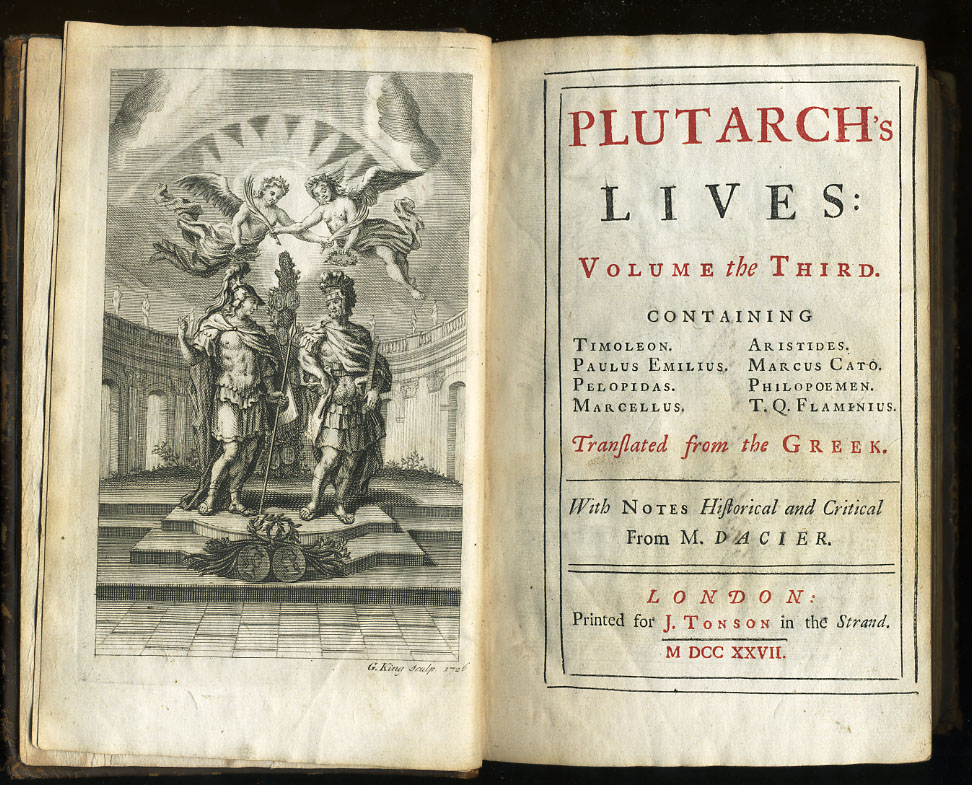
Robert Graves used much of the works of those authors to compose his fictitious autobiography of Claudius, especially Suetonius’s Lives of Twelve Caesars, which he had translated to English. A direct reference by Martin to this work is in a rare book with which Tyrion Lannister gifts his nephew Joffrey (who destroys it), one that is also mentioned by Maester Yandel: Lives of Four Kings, by Grand Maester Kaeth.
Another real-world work that has a counterpart of sorts in Westeros are Julius Caesar’s Commentaries on the Gallic War, in which the general and politician describes his conquest of Gaul. King Daeron I, the Young Dragon, wrote Conquest of Dorne, a book in which he recounts the title event. Within the Ice and Fire universe, Daeron’s book is praised for its simplicity, a common trait with Caesar’s work, which is frequently used in Latin courses for the same reason.
Returning specifically to works by classical historians and its Westerosi counterparts, Martin has spoken about the subject when The World of Ice and Fire was released:
So, unless you want to be as oblivious as Cersei, it might be worth taking the very deep dive, so long as you keep in mind that The World shouldn’t necessarily be taken as gospel. The book is written from the viewpoint of a maester at the Citadel, one who hopes to pass its knowledge on to someone sitting on the Iron Throne. As such, the author may have … rearranged events to suit the interests of a particular royal family. “So who knows if it’s really true or not!” Martin chuckled. Furthermore, the maester’s knowledge comes from other scrolls that, in turn, may be unreliable. The narrative unreliability is reminiscent of Westeros’s first tell-all author, the court jester Mushroom, who claims intimate knowledge of various Targaryen bedroom secrets. “And he may be making up a lot of this shit,” Martin said. “That possibility is there, because he’s an old guy telling tales, and embroidering them, making them more sexual, suggestive, and violent.” Martin likens Mushroom to Suetonius, “the great gossip of ancient Rome,” whose stories helped shape I, Claudius. “It’s full of things like [Claudius’s third wife] Messalina having a fucking contest with a prostitute, and there’s no source for that! Unless you believe Suetonius,” Martin said. “People do know things, but the things they ‘know’ may not be right.”
(Vineyard, Jennifer. “George R.R. Martin on What Not to Believe in Game of Thrones”. Vulture, 6 November 2014.)
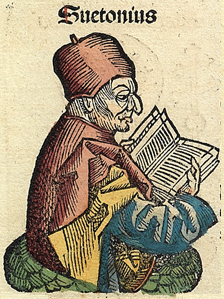
It is actually Pliny (and curiously not Suetonius, who was more prone to such controversial accounts) the one to mention a sex competition between Messalina and the prostitute, but Martin’s confusion doesn’t hide his clear intention to emulate real-world historical production. The ancient historians included, in their works, versions of events that they had not witnessed first-hand, sometimes wrote hundreds of years after the (supposed) facts, and their sources often had questionable credibility.
These questionable versions of events derived from rumors and accounts that circled in court, such as the ones of Mushroom in Martin’s world, later used by the maesters. Both the works by real historians and those by Yandel and Gyldayn were, therefore, susceptible to influences of the historical context in which they were written. As such, they tended to vilify or glorify certain characters according to convenience to people in power at the time.
In addition to writing “fake history”, Martin in the past showed interest in emulating I, Claudius’s very structure, writing a book from the point-of-view of a character that went into history with a very negative image. Ancient historians ridiculed Claudius for his physical conditions and criticized the excesses and executions of his time as emperor, and this biased version of the historical character was the “official” one for many centuries. Robert Graves humanized Claudius in his novels, and Martin apparently has (or had) intention to do something similar in his fictional world.
Speaking with fans about anti-heroes in 2004, the author declared that he had an interest in creating a work about the aforementioned Aegon IV, who is known as one of the worst Targaryen kings (to the point of receiving the epithet “The Unworthy”). The following year, Martin was asked about it by Elio García, who reported the exchange as follows:
I asked if George really had an idea for an Aegon IV the Unworthy novel, first mentioned in this report.
Yes. He’s a very interesting person. The idea would be to do it as a first person novel, a kind of I, Claudius meets Flashman thing. Aegon had something like nine mistresses, he had a difficult relationship with his queen and his brother, and so on. He was the worst king Westeros ever had. It’s just an idea, though — nothing set in stone, as he wasn’t sure how well a first person story featuring that sort of character would work with readers.
(García Jr., Elio. Interaction Glasgow, Scotland, UK. Westeros.org, 4 August 2005.)
It is, of course, a report dated from quite some time ago. Thus, the idea may have been “archived” or put on hold for indeterminate time or even definitely, especially given the other projects the author developed within the Ice and Fire universe.

After a voyage through Roman and Westerosi histories, many of George R. R. Martin inspirations for his magnum opus become quite clear. Certainly, the lives are not always truly parallel, and in many situations, the historical references are subverted or merely superficial. Furthermore, many coincidental cases may fall under the territory of generic tropes, figures, and resources in literature, and it’s entirely possible that Martin has not even consciously written some (or most) of them as direct references. The author has declared the following about the use of real-world elements in his work:
Yes, I mean you can do one-for-one conversions of the real-world to fantasy, but if you’re going to do one-for-one, you might as well just write straight historical fiction. Why write about a character who’s exactly like Henry VIII? If you want to do that, then just write about Henry VIII.
It makes more sense to take certain interesting elements of Henry VIII and certain interesting elements of Edward IV, and maybe something from here and something from there, and put them together and use your imagination to create your own character—someone who is uniquely himself and not exactly like someone from history. The same is true of the battles and things like that.
History is full of wonderful stories and things that you read in books. My wife is always looking out for history books and saying you can’t make this stuff up. So, it’s a great gold mine for any fantasist to read a lot of history.(Roberts, Josh. “Game of Thrones’ Exclusive! George R.R. Martin Talks Season Two, ‘The Winds of Winter,’ and Real-World Influences for ‘A Song of Ice and Fire”. Smarter Travel, 1 April 2012.)
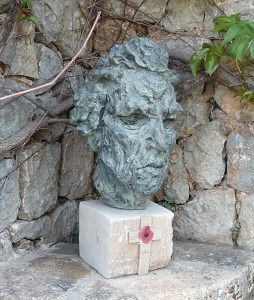
Still, the influence of events from Ancient Rome and I, Claudius in A Song of Ice and Fire is unquestionable, and Martin himself has never denied it when directly asked. On the contrary, he makes a point to reaffirm his admiration for the BBC series, which he frequently says is one of the best of all time. He has also shown himself as not fond of the idea of a new adaptation by HBO, and dismissed rumors that he would be involved in the project:
To some extent [I was influenced by I, Claudius]. I read I, Claudius and Claudius the God many, many years ago. And of course, I loved the TV series. I think the TV series is one of the best series ever done. There’s talk [that] HBO may be re-doing that. That’s a dangerous idea..
[…]
And if they do remake I, Claudius, that’s a tough one to tackle, though, because the original was just so great. How do you equal a cast with Derek Jacobi and John Hurt and Brian Blessed and Xiân [sic] Phillips? Wow, what a cast.
HBO could go further, obviously, because I, Claudius was a BBC production. It was made for a dollar fifty. The sets are painted canvas. You could see marble columns flapping when someone walks by them too fast. They were just a painting. You didn’t care. It was a landmark kind of thing. Special effects are nice, but it’s the writing, acting, and storytelling that make a story great. And the dialogue and the characters, and it’s a brilliant, brilliant show.
(Anders, Charlie Jane. “George R.R. Martin: The Complete Unedited Interview”. Observation Deck, 23 July 2013.)
Name the best television series of all time, and explain why it’s the best
This is a tough question. I have liked a lot of television through the years, and of course I have to exclude the programs I’ve worked on myself (e.g. Twilight Zone, Beauty and the Beast). I was very impressed with Rome on HBO; I found it riveting, both brilliantly written and brilliantly acted. I am interested in ancient Rome so another contender would be I, Claudius, produced by the BBC, that aired on public television three decades ago (1977). It was produced on sound stages so it hasn’t got nearly the HBO production value, but again the writing was superlative, as was the acting, so it holds up today.
(“Powell’s Ink Q&A —George R. R. Martin”. Powell’s Books, 2007.)
I, CLAVDIVS? Heh, not likely. And talk about a suicide mission. I mean, I’ll watch, but how do you match one of the greatest TV series ever made? That’s the television equivilent [sic] of remaking GONE WITH THE WIND or CITIZEN KANE. No, thanks.
(Martin, George R.R. “Re: You’re reportedly new HBO contract”. Not A Blog, 10 February 2013.)
While it is not a work of extreme popularity, a literary blockbuster like A Song of Ice and Fire, I, Claudius certainly has its place among the great English-language novels of the 20th century. The book was included by Time magazine and by Modern Library in their lists of the 100 best English-language novels of the century, and the complete work originated several adaptations since its release.
The cast of the 1976 miniseries includes recognized actors such as Derek Jacobi in the title role, John Hurt as Caligula, Patrick Stewart as Sejanus, in addition to Brian Blessed as Augustus and the acclaimed Siân Phillips as Livia. It would, however, be considered a poor man’s show under the current standards of the golden age of TV series. No grandiose and multimillionaire production as in other epic series such as Rome or Game of Thrones: the sets in I, Claudius were fairly simple, and the total budget of its thirteen episodes was of approximately four million pounds (considering inflation).
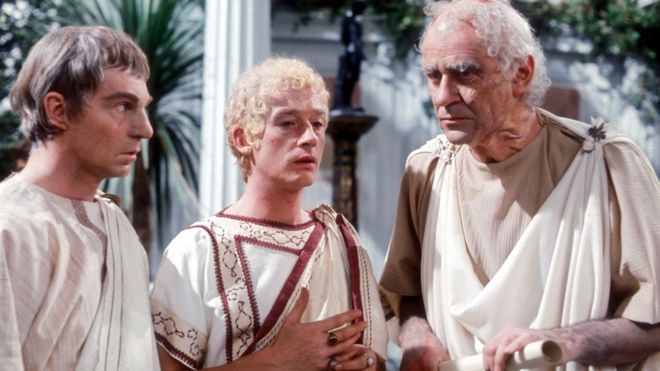
Nonetheless, the series was successful among the public and critics, averaging 2.5 million spectators per episode when originally broadcast in the United Kingdom. It was nominated for and won BAFTA and Emmy awards, and was included in the lists of 100 best TV shows of all-time by the British Film Institute and Time (like the book). The magazine described the series as follows:
This seamily intellectual 1976 miniseries about Rome’s stuttering-but-savvy fourth emperor established what would become HBO’s modus operandi, and not just because it tread similar ground to Rome or because it happened to involve a certain conniving mother named Livia. It proved that the lofty and the sordid were not mutually exclusive, by offering a politically acute version of history that also showed us what happened when the togas came off.(Ponieowzik, James. “All-Time 100 TV Shows: I, Claudius”. Time.com, 6 September 2007.)
For A Song of Ice and Fire enthusiasts, Graves’s novels and their TV adaptation are very appealing works, not only because of the references in Martin’s books, but for their very themes and structure. The novels, in addition to political intrigue, tackle the human relationship with power, and male-female dynamics in this context. Since it is written as an autobiography (albeit a fictional one), the reader has always to take Claudius’s biases into account when reading his opinions, which also becomes an interesting point. Prophecies, fate, and religion are also elements dealt with in the plot.
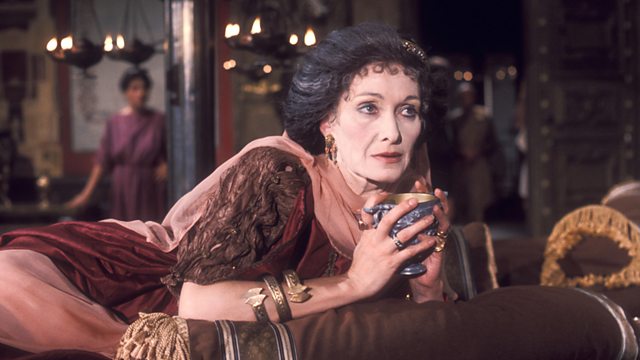
As for the BBC adaptation, I believe that the many statements by George are sufficient for the reader to understand its value. The Claudius “universe” may also work as a gateway to Ancient Rome as a whole, a very rich and diverse historical period not only in the political aspect, but one which has many curious and peculiar episodes as well, and quite largely documented.
A clarification, at last: it is not my intention, in this essay, to make an exhaustive list of similarities. It is quite likely that A Song of Ice and Fire contains other parallels to Rome that are not listed here, be it in the published books or in those that are still to come. Let us hope, then, that the cat Augustus can help George finish his series (Caligula died on january 2018, at 24). Meanwhile, for A Song of Ice and Fire aficionados, the Claudius novels and their TV adaptation are, to be sure, a fine recommendation.
